Annual Report





The Y NSW acknowledges the Aboriginal and Torres Strait Islander peoples as the Traditional Custodians of the lands and waters on which we come together to learn, share and grow. As the earth’s most ancient culture, we respect their historical and continuing spiritual connections to country. We pay our respects to Elders past and present, and to young Aboriginal and Torres Strait Islander peoples for they hold the continuation of cultural, spiritual, and educational practices in their hands. We believe in the power of inspired young Aboriginal and Torres Strait Islander peoples.
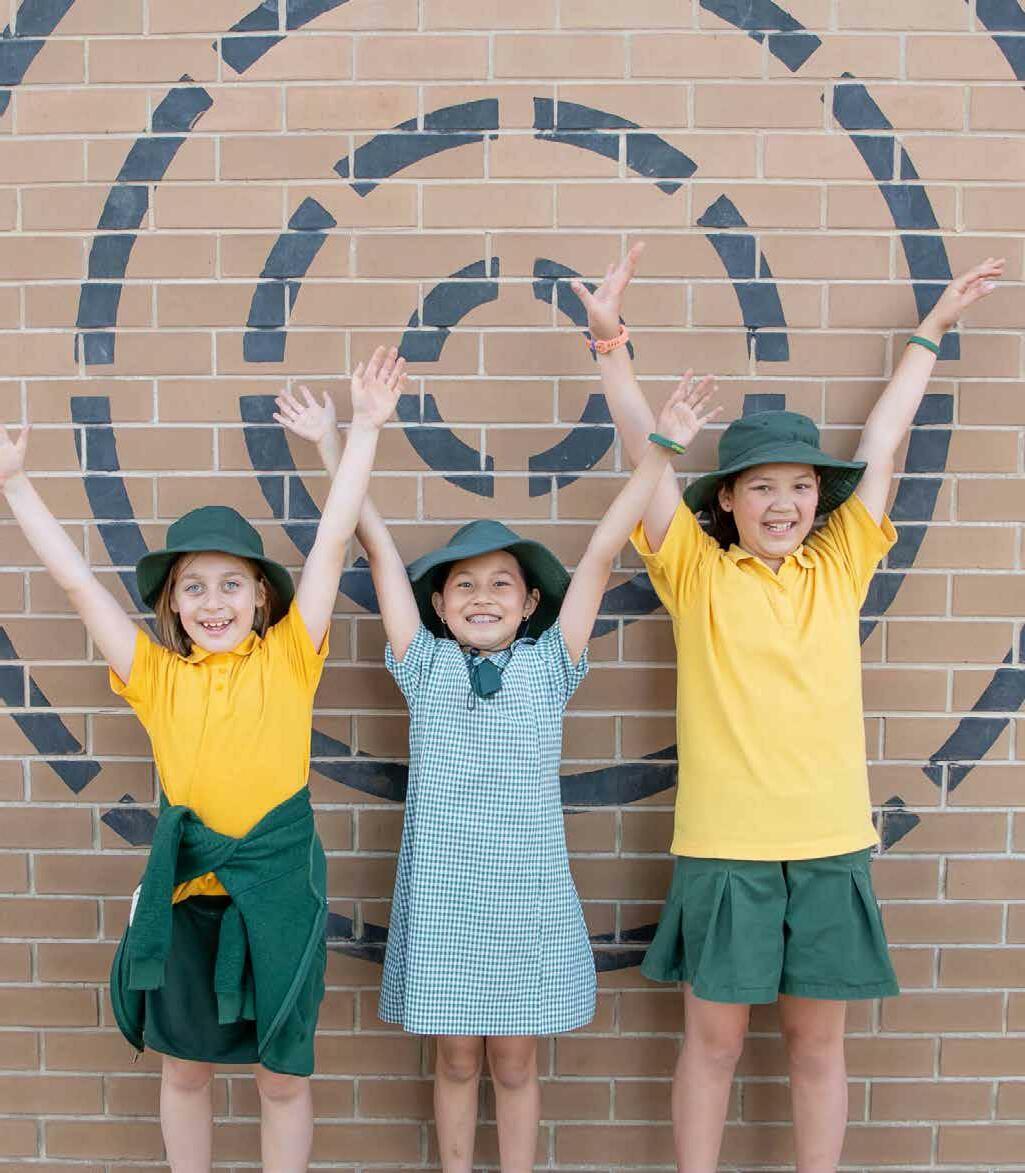
The Y NSW is a vibrant, for-purpose organisation delivering cause-driven programs and valuable community services that help strengthen young people’s lives, their families and the communities in which they live. The Y is part of one of the largest youth organisations in the world, YMCA, which reaches across 120 countries.
We believe in the power of inspired young people
A community where every person thrives in body, mind and spirit
To enhance the wellbeing of children and young people in our communities and to influence the context in which they can thrive.
To empower young people and our communities to build a just, sustainable, equitable and inclusive world.
We are recognised as a leader in safeguarding and it is at the heart of all we do. The safety, wellbeing and empowerment of children and young people is our highest priority.
Our National Safeguarding Framework, strategy, policy and guidance provides robust foundations to ensure that all children and young people are safe and feel safe at the Y, in their families and in their communities.
We are proud that our approach reflects the recommendations from the Australian Human
Rights Commission which are enshrined in law.
The Y has established its own set of 58 comprehensive licensing standards that not only adhere to the 10 legislative standards of the NSW Children’s Guardian, but amplify, expand and reinforce them.
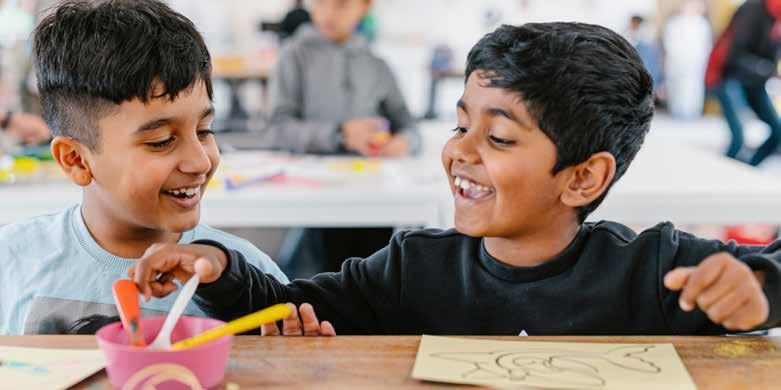
The Y is independently reviewed by the Australian Childhood Foundation (ACF) as a child-safe organisation. We stand by our three pillars of Culture, Operations and Environment.

We will create a safe culture nationally, which empowers children and young people through effective leadership and governance.
We will create safe operations to ensure Y people, parents/carers and community have the right policies, processes and practices to keep children and young people safe.
We will create safe environments at the Y and in communities which empower children and young people to thrive.
The FY21/22 financial year brought challenges that tested our people and operations. The prolonged COVID-19 pandemic and the unprecedented series of floods and bushfires across regional and rural NSW took a toll on our people and the mental and emotional fatigue was real. For the young people we serve, new challenges emerged and existing issues become more pressing, including stress, study and school problems, social pressures, body image, mental health concerns and more.
We emerged from the challenges looking to the future for the Y NSW. We acknowledge and celebrate the resilience and strength of our team members, many of whom in essential service roles continued to work through lockdowns, floods and bushfires to ensure that children and young people were inspired at our services.
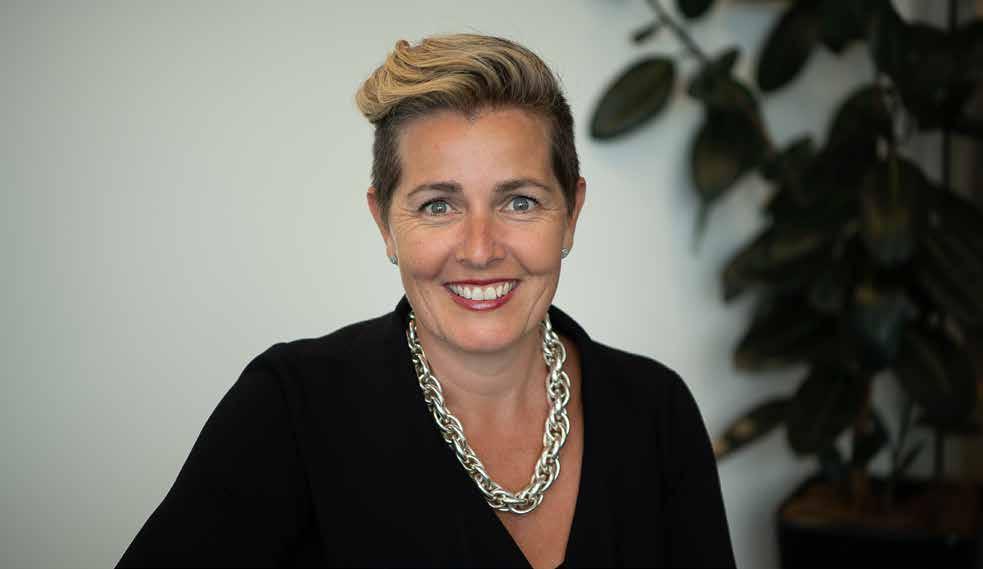
Our purpose – believing in the power of inspired young people – continues to be central in all that we do. In the last 12 months, the Y NSW has focused on continuing our strong connections to communities across NSW and the ACT. While the pandemic was devastating on many fronts, it also provided an opportunity to do things differently.
We are proud of the significant number of children and young people we were able to continue providing programs and services to through virtual gymnastics classes; our innovative swim instructors using a bench and some other key props for simulated swimming; and hosting thousands of young people in online forums and support services.
One highlight from the year was the Y Reignite Camp which was held in the Snowy Monaro region to provide young people impacted by bushfires an opportunity to reflect and debrief. Another is our Call a Youth Worker phone service which brought young people in touch with youth workers who provided support during periods of lockdown. And for the first time in its 20-year history, our flagship leadership and engagement program Youth Parliament was delivered via an online platform with great success.
We applaud our Children’s Services team for their tireless efforts maintaining essential outside school hours services and enabling parents and carers throughout NSW to continue with their critical work commitments.

Streetgym was welcomed back offering physical activity and wellbeing programs for young people across Mt Annan, the Central Coast and western Sydney. Additionally, our teams supported dozens of young people who find it challenging in traditional learning environments to undertake employment accreditation workshops. In our Outdoor Education and Camping portfolio, we were pleased to continue Camp Yarramundi’s important work in partnership with the University of Wollongong’s Recovery Camp to provide recovery-orientated experiences for young people living with mental illness.
During the year we developed an exciting three-stage master plan for Camp Yarramundi to transform the current campsite into a more inclusive complex that caters to people of all ages and abilities.
Our strength of diversity reflects the communities we partner with and we are proud to be a safe and inclusive place where everybody is valued.
We consulted extensively with our people and Board to develop our Diversity, Inclusion, Equity and Belonging Strategy that sets out our strategic intent and direction and informs our day-to-day practices. A key part of this strategy was the development of our Reflect Reconciliation Action Plan, highlighting the journey the Y NSW is on with much to learn and understand from our First Nations people. Reconciliation, at its heart, is about unity and respect between Aboriginal and Torres Strait Islanders and non-Indigenous Australians. Listening to the voices of Aboriginal and Torres Strait Islander children and young people, families and communities, we look forward to bringing our Reflect RAP to life over the coming 12 months.
Our Affinity Network continued to embrace diversity and inclusion. For the first time, team members from the Y NSW and Y Australia participated in Mardi Gras – a fantastic celebration of our LGBTQIA+ community.
During FY21/22, we continued to have a strong focus on supporting people living with disability through our Ability programs. This included outdoor activities, fitness programs, gymnastics, before and after school care and vacation care.
When restrictions lifted and it was safe to do so, we resumed all our Community Recreation and Youth and Community programs. Across our state, hundreds of people of all ages and abilities embraced the joy of our aquatics, fitness and sporting programs.
Children’s Services continued to go from strength to strength throughout the year. Our teams are to be commended for their dedication in preparing the centres for the accreditation process and the strong results which followed. This included 94 per cent of our services achieving a result of Exceeding or Meeting in the National Quality Standards.
Pictured: Chair Prue Warrilow (top) and CEO Susannah Le Bron.We acknowledge our dedicated staff members and the outstanding programs which were recognised by peak industry bodies this year. Mount Annan Leisure Centre won two awards for its Learn to Swim program – the Australian Swim School Association (ASSA) National Award of Excellence for Inclusion and the AustSwim NSW award for Swim School of Excellence – Large.
During the year, the executive team and senior leaders engaged with our Board providing detailed insights on the organisation’s performance. This included industry positions, competitor analysis and aspirational opportunities. With these insights we began work on a bold new strategy to take us forward.
The Y NSW Strategy 2022-2025 aligns with the YMCA Vision 2030 Strategy and sets out six strategic pillars of focus including: an enhanced service offering that empowers young people, an engaged and effective workforce, an enterprise approach to sustainability, greater advocacy and influence on issues and policies, enhanced digital capability and a strengthened financial position.
The new strategy is set to provide clear direction for our organisation, one that ensures stronger performance and financial stability enabling all of us to dream bigger on our purpose.
The significant disruption to our programs and services over the last year has meant the Y NSW has embraced the opportunity to review and consider different ways of achieving profit for purpose. We are grateful for the support of the NSW and Federal Government, however we are conscious we need to continue to advocate for ongoing support and reform to enable our purpose work to be unaffected in times of need.
Overall, we have concluded the year in a relatively strong financial position all things considered and are now focused on re-establishing and seeking opportunities to further strengthen our financial sustainability.
We express our gratitude to our Board members who work on a voluntary basis delivering on the strategic intent for the organisation in strong and active partnership with our executive and senior leaders. Special thanks go to our people on the ground that deliver our services day after day. You have all worked tirelessly, sometimes under great adversity, to continue to provide our services that help us to deliver on our belief, our mission and our vision. Thank you for making the Y NSW the great place it is and the great place it will continue to be as we partner together in diversity, inclusion and reconciliation, ensuring a strong and sustainable Y NSW into the future.
It takes a village to raise a child and so too with the Y NSW. Thank you for believing in the power of inspired young people.

Warm regards,
Prue Warrilow Chair S usannah Le Bron CEOY
REPORT
NSW
ANNUAL

We are committed to ensuring our work contributes to community wellbeing through a Results Based Accountability (RBA) framework. This continuous quality improvement process keeps us focused on the impact our programs make and the positive difference we have on children, young people and communities.
of participants feel the Y is a safe and inclusive space 4
of participants feel they have a voice and are heard 4
of participants have an increased sense of belonging 4
of participants rated customer experience “awesome” or “good” 3
rated customer experience as ‘’awesome’’ or ‘’good’’ 1
of children reported a sense of belonging 2
2022 THE
of participants reported an increase in their confidence 5 2021
-
Developed our Diversity, Equity, Inclusion and Belonging Strategy
Submitted our Reflect Reconciliation Action Plan
Appointed General Manager Policy and Advocacy
Commenced the development of a Policy and Advocacy Strategy
Inclusion, connection and wellbeing are at the core of who we are as an organisation and our vision is for a community where every person thrives in body, mind and spirit. This year, the Y NSW took the first step in our commitment to take practical action towards reconciliation through the development of our first Reconciliation Action Plan (RAP).
In collaboration with Two Point Co. – an Aboriginal and Torres Strait Islander controlled and owned consultancy –we developed our Reflect RAP, which acknowledges with honesty and humility what we do not know and pledges to seek to understand and celebrate the rich cultures of our First Nations peoples.
It is in a spirit of consultation and partnership that we commit to bringing our Reflect RAP to life over the coming 12 months. The Y NSW looks forward to the next stages on our reconciliation journey, listening to the voices of young First Nations peoples and integrating them into our ongoing commitment to a longer journey of understanding, celebration, healing and meaningful action.
Our young people represent hope and where there is hope, there is possibility. Positive social change in society and our communities depends on our ability to inspire, engage and listen and it is in this spirit that we have developed our first Reflect RAP.

We are committed to strengthening communities by connecting people to their potential, purpose and each other.
We empower young people and the communities they live in through a range of programs that focus on physical and mental wellbeing, life skills, advocacy and more. We believe contemporary programs that respond to real issues can proactively change lives.
We provide high quality outside school hours care at 55 centres across NSW. Our passionate staff are dedicated to creating environments that are fun and safe. It’s our aim that all children go home having had an experience that makes both the children and their parents smile.
Our 30 recreation centres across NSW and the ACT provide industry leading and community-focused programs that empower people to live healthy, active and social lives. We believe being active means valuing the freedom to be yourself and creating connection to others.
The Y NSW has been offering camping and outdoor education experiences for 85 years. Our wealth of experience helps participants enhance personal growth, strengthen a sense of community and connect with the natural world.
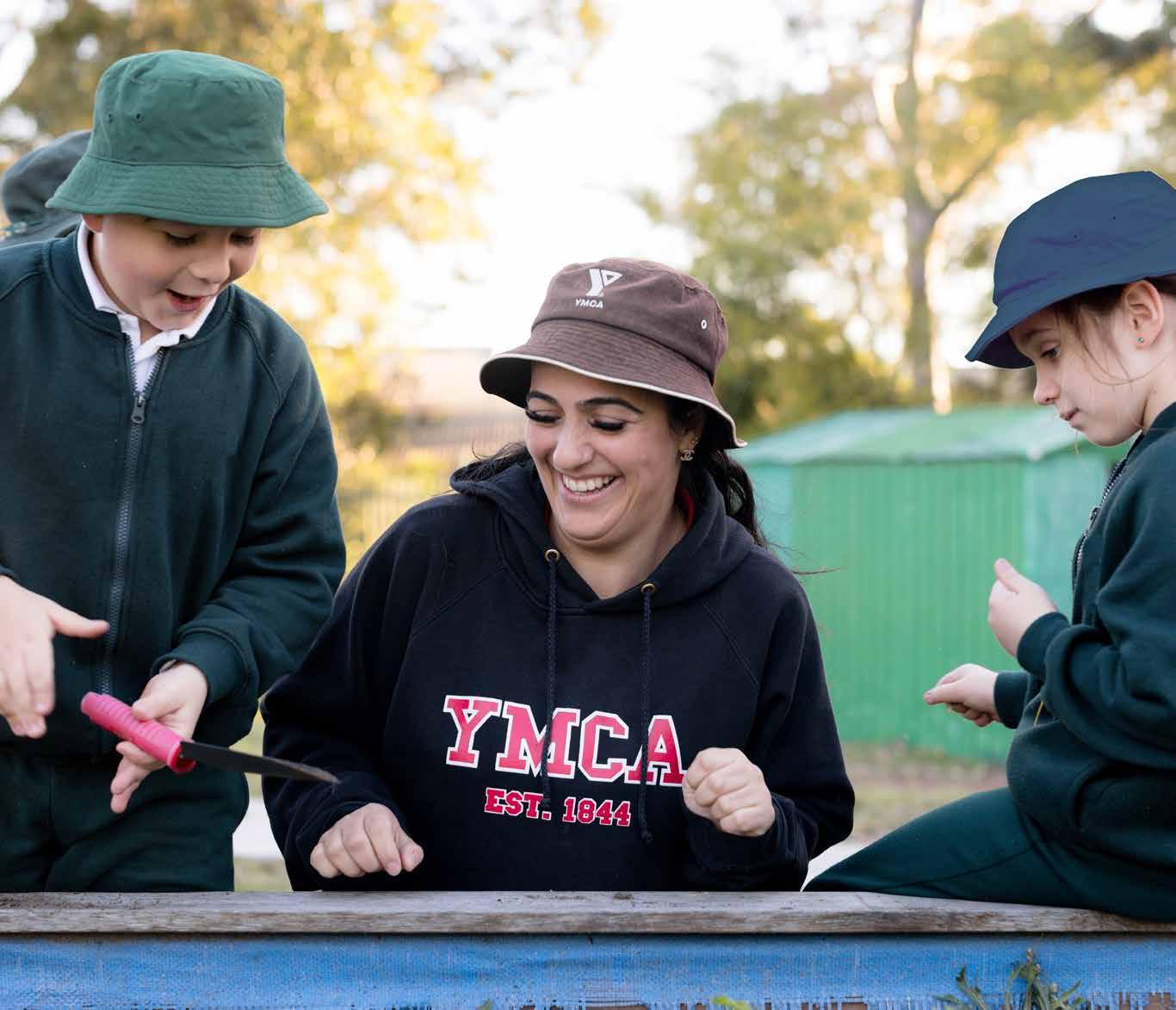
The Y NSW is committed to delivering purposeful cause-driven programs that aim to solve contemporary social issues through our Youth and Community (YaC) services.

The amazing programs are funded through grants, in-kind contributions and internal cross subsidisation and are delivered in Broken Hill, the Central Coast, Parramatta, Cooma, Mt Annan and Penrith. Complementing our onsite offerings are a range of online and state opportunities that all young people across NSW can access, including Uplift Online and our flagship Youth Parliament program. These programs are designed in consultation with young people ensuring they meet the needs of the local community.
Our YaC team also leads the outcomes measurement work across the organisation. Our community impact has been measured across all service delivery lines with our RBA framework to be further embedded, deepening a focus on continuous quality improvement and social impact.
The Y NSW’s flagship youth leadership and engagement program, Youth Parliament provides high school students with the opportunity to engage with policy development and democratic parliamentary debate. It is about empowerment and providing young people with a platform to participate in the political system and have their voices heard.
The 2021 Youth Parliament took place virtually in January 2022 due to pandemic restrictions.
The 90 participants from schools across NSW met online for 12 debates on key issues – energy and climate change, Aboriginal affairs, COVID-19, education, transport and infrastructure, mental health, rural and regional affairs, diversity and inclusion, women’s affairs and justice.
Youth Parliament was supported by 12 Members of the Legislative Assembly and the Legislative Council in NSW, who acted as the Speaker for the various debates, as well as the Leader of the Opposition Chris Minns MP and the Advocate for Children and Young People Zoë Robinson.
The unanimously passed Bill to end menstrual poverty
A code for inclusive school uniforms, embracing gender diversity, neurodiversity, religious and cultural diversity
A Bill to modernise sex education in schools, reflecting more diverse gender understanding, consent, issues of sexual harassment and rape and increased teacher training on these topics.

Delivered in local spaces (Y Spaces), Streetgym is a free program for young people aged 12 to 18. These spaces provide a safe and supportive environment where young people can make friends, be active and connect with other services in their area.

Run by qualified youth workers, the program provides structured physical activity, aiming to develop confidence, leadership and social skills. Streetgym operates at Mt Annan, the Central Coast and Cranebrook and engaged 441 young people during the year.
This eight-week early intervention program is centred around health and wellbeing. The program includes one 90-minute session each week broken into 45 minutes each, aligned to the weekly themes which include support, resilience, connection, values, reflection and action. Participants have access to free gym membership throughout the program.
During the year, the Y provided Uplift to 72 young people across 25 sessions.
Nine Bills determined in Youth Parliament were presented to NSW Ministers at Parliament House in March 2022. Accepting the Bill, Minister for Women Bronnie Taylor confirmed the Bill to end menstrual poverty had influenced new state legislation. “We recently made an announcement funding all sanitary products for girls in schools, so well done, that is because of you and your work, very happy to serve,” she said.
Youth Parliamentarians are also supported by the Taskies, a group of mainly former Youth Parliament participants who return to fill the many roles associated with the parliamentary process.
In FY21/22, the Y NSW provided seven accredited workshops in barista, first aid and general construction induction cards to 68 young people on the Central Coast. Mostly working with young people from diverse backgrounds and those finding it challenging in a traditional learning environment, these workshops provide additional support to ensure the participant has the best chance of success.
The Y NSW has been supporting young people to participate in this training since 2019. These workshops are targeted at young people that are not eligible for government initiatives such as Smart and Skilled.
Launched in May 2022, Uplift Online is a free sixweek online program for young people aged 16 to 25, funded by a nib Foundation Health Smart Grant. Our online platform, hosted by Y Victoria, provides young people with weekly key wellbeing themes and activities, along with weekly fitness videos they can complete at their own pace.
Participants can also take part in weekly Zoom catch ups, giving them a chance to chat with a youth worker and fitness instructor, work through the weekly activities, conduct a wellbeing check and a health and fitness Q&A for the week ahead.
So far, we have had three intakes with a total of 25 young people. Over each intake, our young people grew more confident within the group to talk about their wellbeing.
This six-week program reached more than 60 young people, with special guests ranging from the Y NSW staff to community leaders. These guests mentored our participants, delving into topics such as leadership styles, conflict resolution and community consultation.
Created during the COVID-19 pandemic, the Call a Youth Worker phone line provided an opportunity for young people to connect with youth workers and access support to navigate life in lockdown. Now, this support line helps young people aged 12 to 25 access information about local services and support available to them. In FY21/22, we supported 216 young people through this service.
Youth workers assist with referrals to other services, information about support, questions about school, financial hardship, accommodation and more.
We offer free activities for young people during school holidays periods at our Cooma, Central Coast and Parramatta locations. This will be extended to Mt Annan and Broken Hill in FY22/23.
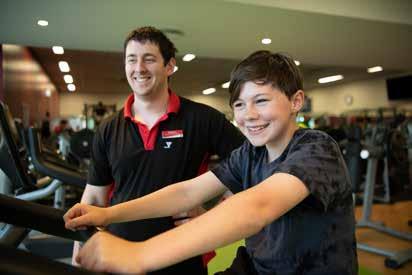
All our activities are planned in alignment with what young people want to do. During the year, we hosted pool parties, bowling, graffiti workshops, cooking, macrame, movie days and snow trips for young people.
Our Y Spaces pride themselves on being responsive to the needs of individual communities. Our teams across the state are responsible for identifying gaps in service provision and the delivery and facilitation of skill-based and personal development opportunities.
In FY21/22, the Y NSW delivered a mix of online and in-person programs to 217 young people, including anger management, alcohol and other drug education, managing finances and more.
We celebrated 25 years delivering programs to young people in the Snowy Monaro region in April 2022 and combined these celebrations with the relaunch of the Youth Hub.
The Hub benefited from extensive work carried out by Snowy Monaro Regional Council to upgrade the interior, allowing a more purposeful space for young people to engage in a variety of activities and programs that support skill development and wellbeing.
Late September 2021, the Y NSW received $12,000 from the Department of Communities and Justice (DCJ) to support more than 120 young people and families impacted by COVID-19 in the Parramatta and Penrith LGAs.
The funds were exhausted by early December, highlighting the demand for material aid and brokerage support. Funds were allocated to purchase groceries, medication, pet food, utility bills and more for some of our most vulnerable young people.
Funded by the City of Parramatta, this project responds to presenting issues in the Telopea community, including alcohol and drug misuse, alcohol-related non-domestic assault, malicious damage to property and use/possession of prohibited drugs offences.
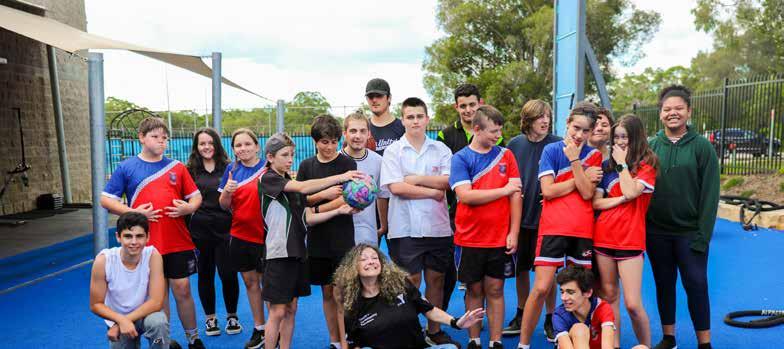
Using an assertive outreach framework, the Y NSW often acts as a connector of young people to community partners and local services, meeting young people where they are at and making the steps for obtaining support simple and accessible.
This camp for young people in the Snowy Monaro region impacted by bushfires, including young people who volunteered during the fire season, offered an opportunity to engage in reflection and recognise leadership skills, connect with peers and debrief.
Of the 15 young people in attendance, 100 per cent indicated they felt connected to their friends/ peers while at the camp and that the camp was a safe and inclusive environment.
Youth and Community Services is committed to ensuring our work contributes to community wellbeing through our RBA framework. The RBA framework is designed to capture insightful data for continuous improvement purposes with key themes of measurement such as social connections, safety, confidence and more. Aggregated data across Youth and Community Services during the year revealed 96 per cent of participants felt the Y is a safe and inclusive space, 87 per cent of participants feel they have a voice and are heard and 86 per cent of participants have an increased sense of belonging. Streetgym
You can hear the smile in Year 12 student Chelsea’s voice when she describes how her involvement in advocacy began.
“In around Year 9, started talking to people about causes that I was passionate about. I remember feeling that the voice of young people was missing in NSW politics at the time,” Chelsea said. “When heard about Youth Parliament, decided to apply and that’s what started it all.”
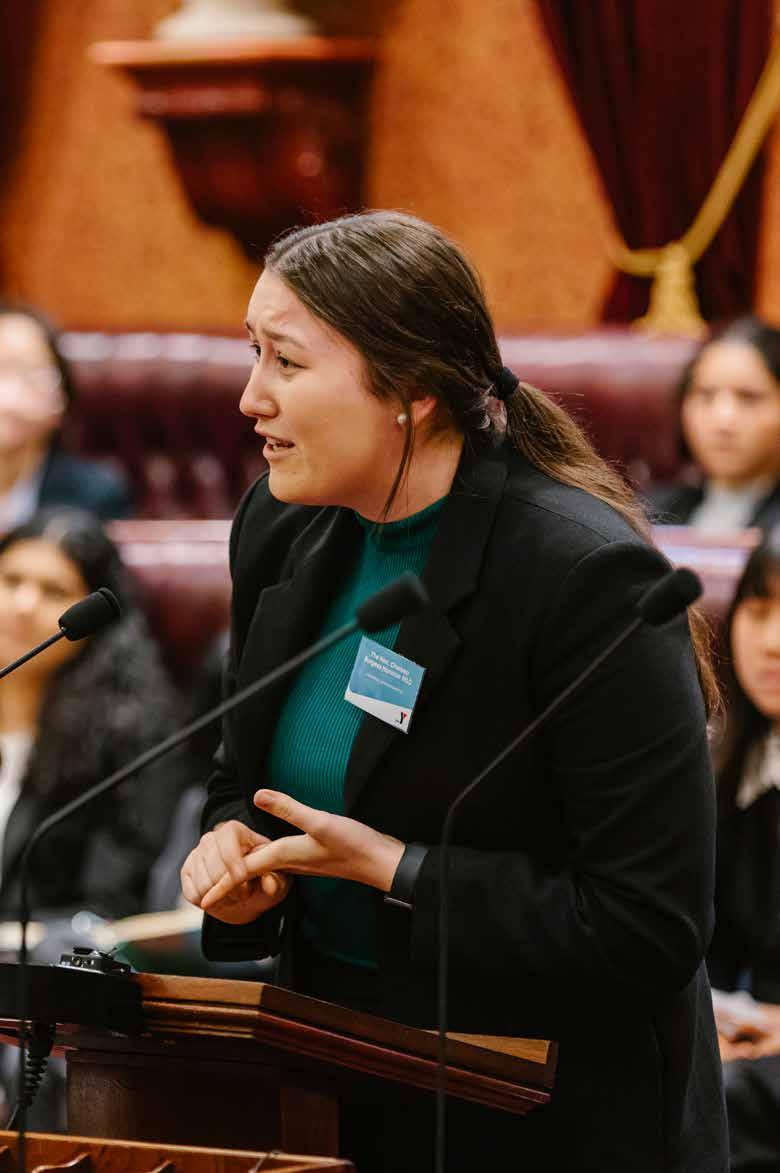

Youth Parliament allows high school-age students to engage with civic leadership, policy development and democratic parliamentary debate. Chelsea has been accepted into the program for three consecutive years (2020, 2021 and 2022) and is now a NSW Regional Youth Taskforce Member and a 2022 the Y NSW Youth Parliamentarian. Attending training camp, acting as Deputy Leader of the Opposition during sitting week and mentoring other participants are highlights so far.
“Hearing the stories of other young people and listening to what they’re passionate about is quite moving. It drives me forward,” Chelsea said. “You don’t have to be a straight-A student or an expert debater to participate. Diversity is a key part of what makes Youth Parliament so special, because the more voices we have, the more difference we can make.”
The program has also been formative for Chelsea as she looks to her future. While keeping her options open, she hopes to work in a nongovernment organisation or politics. She also hopes to return to Youth Parliament in 2023 as a member of the Taskforce to mentor future participants.
“I treasure the experiences that Youth Parliament has left me with and what it has taught me in terms of leadership, public speaking and the formation, refuting and amending of a parliamentary bill.”
BEFORE SCHOOL CARE SERVICES
54 AFTER SCHOOL CARE SERVICES 55 VACATION CARE SERVICES
We know the difference high-quality education and care can make to a family’s life. Our skilled and dedicated educators focus on developing pathways for all children to have an experience that supports their physical, mental and social wellbeing. Whether joining for a term, school holiday or casual booking, children enjoy socialising with different ages, engaging with others from diverse backgrounds and building confidence outside of the classroom.
This year the Y NSW operated 55 individual OSHC services throughout NSW and welcomed more than 10,000 children from thousands of families to our centres, 450 of whom were in kindergarten.
 Dylan painting with educator Arzu at the Y Newbridge Heights OSHC
Dylan painting with educator Arzu at the Y Newbridge Heights OSHC
All services are assessed by the Early Childhood Education Directorate – part of the NSW Department of Education – against the seven quality areas of the National Quality Standard. These rigorous standards require our services to submit a Quality Improvement Plan ahead of an onsite visit, with criteria including the quality of our programs, the health and safety of our children, the design of our facilities and our governance and leadership.
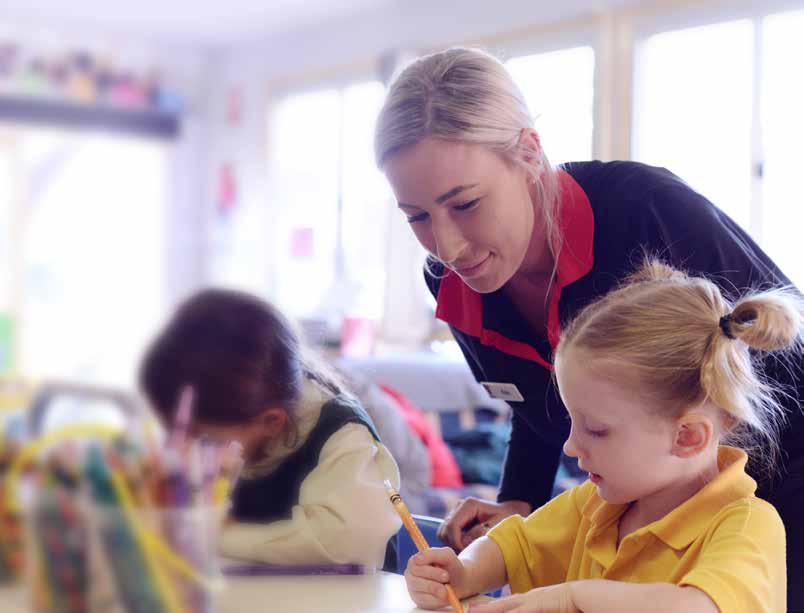
Our teams are to be commended for their hard work this year preparing the centres for the accreditation process.
In strong results, 94.23 per cent of our services achieved a result of Exceeding or Meeting the National Quality Standards. Our remaining services are currently awaiting their assessment and are on track to achieve similar results.
Our centres exceeded the sector benchmarks in three Quality Areas – Physical Environments (QA3) by 21 per cent; Staff Arrangements (QA4) by 20 per cent in effective governance and processes to ensure quality learning experiences for all children; and Collaborative Partnerships with Families and Communities (QA6) by 29 per cent.
We celebrated expanding into four new services this year. In the first six months of 2022, we successfully transitioned into Carlingford West, Liverpool, St Marys South and Gillieston public schools, offering OSHC services to hundreds of children.
We also expanded our service offering at five existing sites with new or relaunched vacation care at Rockdale, Ambarvale and Springwood and new Hubs at Burwood and Newbridge.
Our employees must be commended for demonstrating dedication and resilience throughout the challenges of the COVID-19 pandemic. Our educators and coordinators have been on the frontline, continuing to offer services to families through lockdown and navigating during times of staff shortages.
Children’s Services implemented RBA into OSHC in 2021 with the aim to capture insightful data for continuous improvement purposes. A key theme of measurement through our RBA tool is a child’s sense of wellbeing – how they feel physically, mentally and socially when attending a Y OSHC.
As well as gathering feedback via surveys to children, families and staff, we have also begun rolling out RateIt devices to centres – an iPad that allows children to share how they feel about the service at any given time and provide feedback.
One key outcome of the results was finding children are more anxious in social situations and interacting with other children face-toface. We believe this to be one of the impacts of the COVID-19 pandemic and the associated restrictions, which brought about a reliance on technology and impacted children’s physical activity.
Our RBA results have shown we are meeting these issues head on. Despite children struggling with social interaction due to the impact of the pandemic, we create warm, friendly and inviting environments and arrange activities for children that are of the same age to make connections with their classmates. This has resulted in children saying they feel socially connected at the Y. We will continue to build on this by creating greater opportunities for connection in our centres, both among children and between children and educators.
This first foray into RBA has been an informative experience for all members of Children’s Services. As we further develop and refine our questions, particularly for children, we look forwarding to seeing how their views can inform our decisions in the future.
Breakfast is often called the most important meal of the day however research shows that almost one in 10 Australian children and teens aged two to 18 years skip breakfast1 . The Y was pleased to partner with Kellogg’s as part of a breakfast program run at our sites across Sydney’s southwest including Padstow, Panania, Revesby and Hammondville. Kellogg’s has a distribution site close to these services and generously supplied free breakfast cereals for all before school care services in this region in Term 1 and 2 2022.
This partnership has enabled these services to enhance their before school care offering, providing a formalised breakfast to their programs that sets children up for success throughout their
The team at Padstow Heights OSHC, led by Coordinator Renee Watson, ran a multi-term Bread Project through 2021, bringing children, families and a Federal MP together to shape their OSHC. After conversations about healthy eating led to a need to remove white bread from the menu, the children had mixed views about the change, with some challenging the decision.
The educators saw the importance of this group discussion and began to translate their children’s views on social justice, community, democracy, diversity and inclusion into an evolving participation activity. Children created artwork to support their views, three representation parties were formed and all children were given roles through a voting campaign.
Following a passionate campaign period, the final election was held and attended by the Federal Member for Banks David Coleman, who oversaw the proceedings. It was decided that children would be able to decide each menu option, which continues now with requests for each weekly
Josephine is grateful for the life experiences budding-artist daughter Micaela has gained at the Y Hammondville OSHC.
Learning through activities and being guided by her educators has helped Micaela become more at ease in groups and played a role in her being accepted at her chosen high school.

Nine-year-old Micaela has attended after school care at the Y Hammondville OSHC since kindergarten. This has been a perfect solution for busy, full-time working parents Josephine and Michael but they were initially unsure what to expect from OSHC. Micaela has always had a quirky sense of humour and real consideration for others, however she can be “reserved at first”.
Josephine said OSHC helped Micaela socialise, not only with her age group but all years. “The carers are great and encourage play. It was cute when Micaela met other Micaelas and told me how they were similar!” she said.

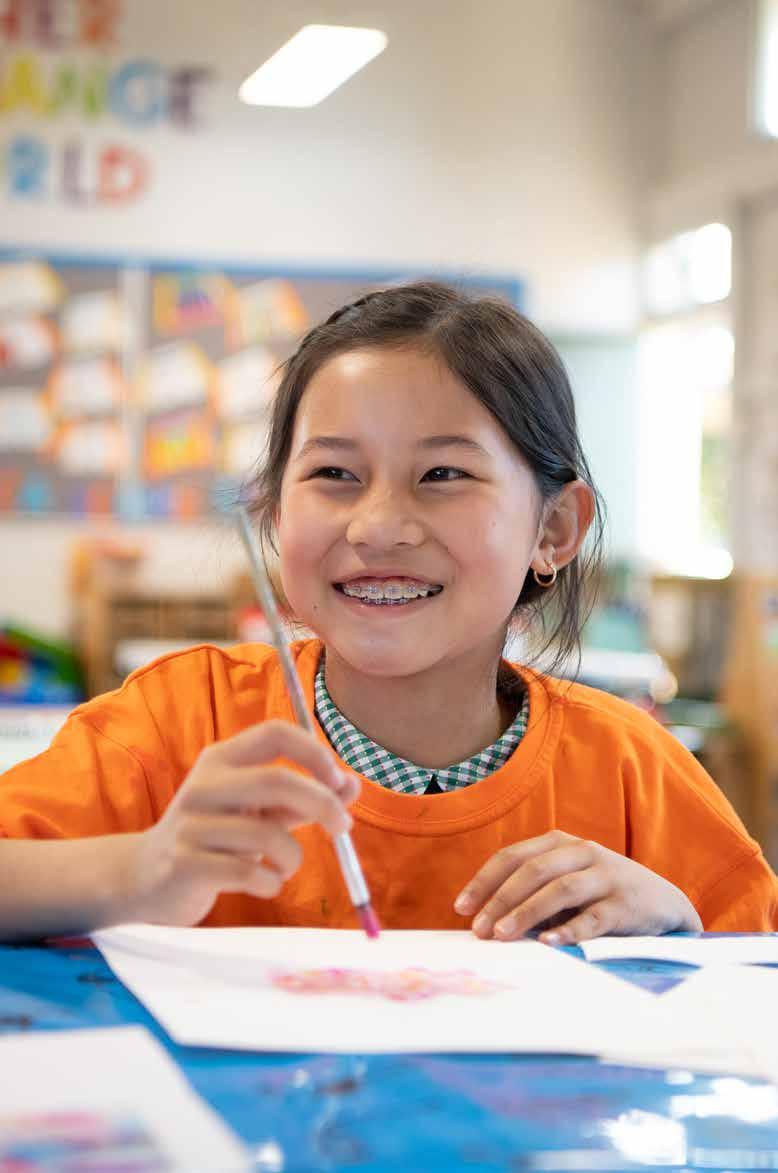
“I remember when an educator brought in oil pastels. Every day for weeks Micaela was glued to the table and in her element. She was so inspired that we bought her some and now she makes cards and pictures.”
Josephine said Micaela “jumped up and down with excitement” when she found out she would be going to her chosen high school and believes the confidence Micaela gained at OSHC played a part in her selection.
The Y NSW provides industry leading and community-focused programs across NSW and the ACT that empower people to live healthy, active and social lives. From Broken Hill to Bellingen and dozens of communities in between, hundreds of thousands of Aussies of all ages and abilities enjoy our aquatics, fitness and sporting programs.
Our centres also offer a range of supplementary lifestyle services, such as lifesaving education, childminding and school holiday activities.
Our community recreation sites range from small outdoor pools right up to new, state-of-the-art leisure centres and are either owned, on long-term leases or management contracts, predominantly with local government.
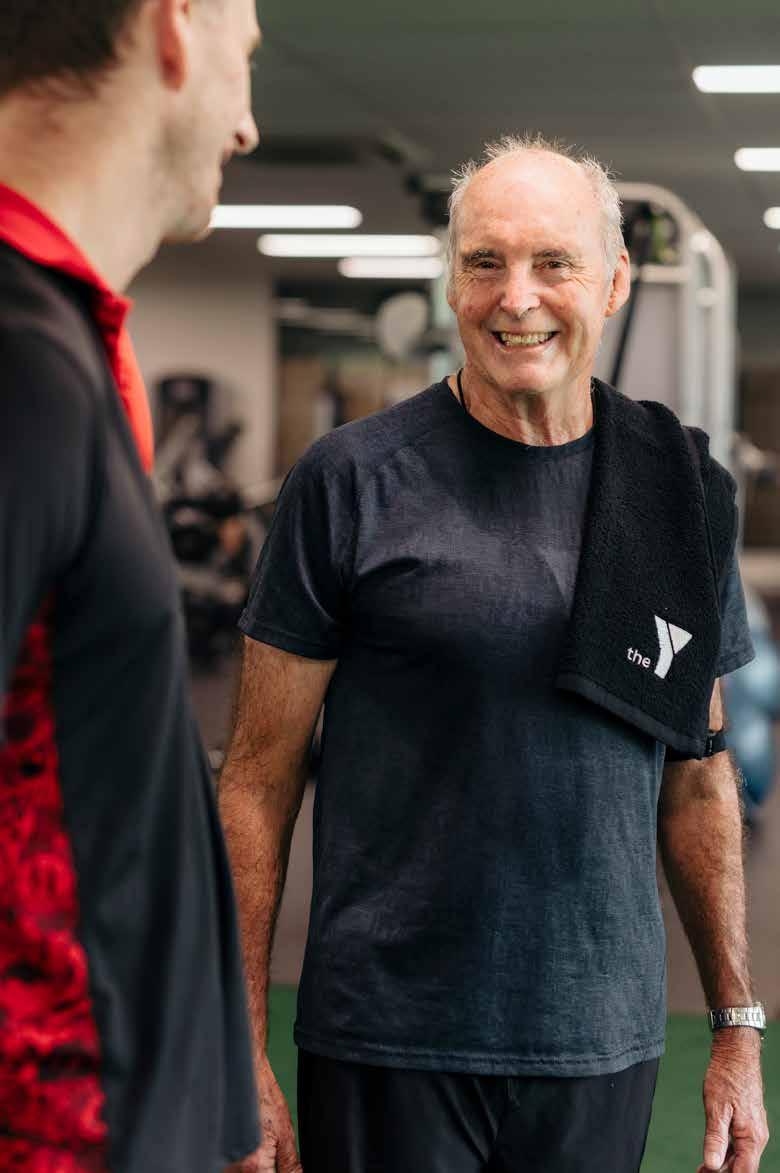
We offer a mix of aquatic programs to appeal to swimmers of all ages, levels of experience and ability. Each aquatic centre ensures that lap swimming is always available, along with recreation swimming for general fitness and enjoyment.

Our Learn to Swim program is designed to teach people from six months through to adults how to swim and survive in the water. Each class is taught by an AustSwim or Swim Australia qualified instructor. The continuous swim school program ensures consistency across skills being learnt.
Our SwimAbility program provides opportunities for people living with disability to be active, build confidence and develop skills. A variety of different physical and developmental abilities are accommodated and classes are one-on-one.
Our squad program takes swimmers to the next level, by first focusing on the development of stroke technique, then increasing into more complex skills and drills as swimmers progress through the levels to state squad. We also offer Adult and Teen Swimfit – squad-structured programs to maintain fitness or for other needs than standard competition.
From yoga to boxing, our fitness programs offer something for everyone.
Pryme Movers is a discounted membership option for people aged 55 and over that offers access to the pool; Pryme-specific aqua aerobics and studio-based classes; social networking after each class; ongoing social events; and a fitness assessment and exercise program tailored to older participants.
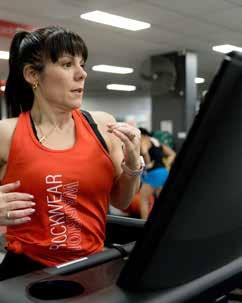
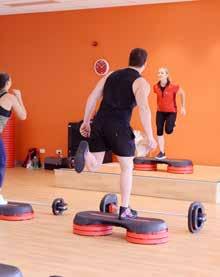
Our group fitness classes are provided to members by our professional instructors, creating an encouraging team environment. We also offer flexible personal training options to help members achieve their health and fitness goals through oneto-one support.
Teen Gym is a fitness program for young people aged 11 to 14 to encourage teens to exercise in a safe, social environment and learn healthy exercise habits. Free access is also provided to Year 12 students during the HSC exam period to help manage stress and promote wellbeing.
gymnastics, indoor soccer/futsal, netball, pickleball, squash and volleyball
Learn to Play – badminton, basketball and volleyball
GymAbility Social Table Tennis Venue Hire
In partnership with Macquarie University, the Y NSW has been involved in a research and technology project to enhance lifeguard performance. This project takes into consideration the psychological demands of the role, including sustained attention (attending to the pool environment) and cue utilisation (identifying patrons in distress or at risk).
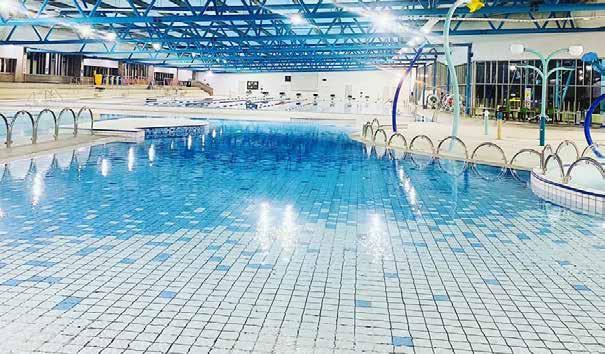
The Y NSW offers a variety of sports at our centres across NSW, which include a mix of competitions for seniors and juniors and our Learn to Play classes. These are designed to help children and teenagers to learn skills in a range of sports such as basketball and volleyball.
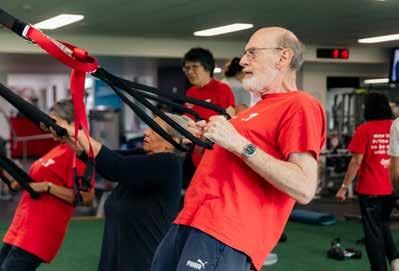
As part of our commitment to inclusion, we are pleased to ensure our popular gymnastics programs are available to as many people as possible. Our coaches work with participants and families to create opportunities where everyone can try, learn and discover the joys of this fun sport. For those with additional support needs, we offer our GymAbility classes where individual needs can be accommodated in fun and safe environments with experienced and caring coaches.
In January 2021, we launched the Y NSW Fitness App with a successful initial take up that continued into FY21/22. Available on iOS and Android devices, the app offers our customers the ultimate convenience in managing their membership. This mobile technology allows members to book their spot in group fitness classes, have access to their assessment data, participate in member challenges and more.
The take-up on the app has been successful, with more than 45,000 registrations across both platforms.
Community Recreation is committed to ensuring our work contributes to community wellbeing through our RBA framework as part of a commitment to continuous improvement. A key theme of measurement through our RBA tool is understanding improvements around key metrics such as wellbeing, confidence, social connections, safety and more. Some of the highlights from RBA data during the year include 94 per cent of gymnastics users reported they felt safe and included, 85 per cent of users reported an increased sense of belonging because of participating and 88 per cent of users reported increased confidence.
The solution developed is a Virtual Reality (VR) training program using simulated scenarios to enable trainees to develop and practice managing the psychological demands of lifeguarding in an environment as “realistic” as possible. The program exposes lifeguards to the environment and potential risks with the ability to assess and use the data to identify skill gaps and focus on development.
In practice, the VR tool can support selection, training and assessment to improve lifeguard performance and reduce the critical risk of death by drowning.
There are tangible and intangible benefits to this piece of work, with predicted reductions in training costs, commercial opportunities and an overall strengthening of the organisational risk profile.
In June 2022, Emma Bunting commenced as General Manager Recreation and Camping. Emma came to the Y with extensive leadership experience as an executive operational manager. In the same month, Max Olsson took on the role of Cluster Manager of Ku-ring-gai Aquatic and Fitness Centre and Ryde Community Sports Centre. Max’s experience at the Y spans more than five years.
Closed since early 2020, the Y NSW in partnership with MidCoast Council officially opened Tea Gardens Swimming Pool as a supervised swim centre in December 2021.
In March 2022, Port Macquarie-Hastings Council announced the Y as the successful tenderer for the management and operations of four Councilowned swimming pools – Port Macquarie War Memorial Olympic Swimming Pool, Wauchope Memorial Olympic Pool, Kendall Community Pool and Laurieton War Memorial Baths.
In early 2022, the Y was announced as the successful tenderer for three existing services managed on behalf of the ACT Government –Canberra Olympic Pool, Gungahlin Leisure Centre and Lakeside Leisure Centre.

The Y will continue managing the Hawkesbury Oasis Aquatic and Leisure Centre and CentrePoint Sport and Leisure Centre, Blayney, for a further two years following Council decisions to extend our tenure.

In November 2021, the Y NSW and Armidale Regional Council entered a non-binding Memorandum of Understanding (MOU) for a pilot project regarding the strategic and operational aspects of Council’s pools in Armidale and Guyra.
The MOU had a dual purpose to explore the strategic opportunities to grow the centres, increase patronage and maximise operational capability and efficiencies. The Y conducted extensive community consultation as part of the process to ensure the voices of the community were heard.
The Y NSW undertook research and exploration into:
• Establishing the needs, social benefits and impacts to the community of high-quality leisure, recreational and wellness services
• High level investigation of site suitability to ensure the best use of the site is achieved
• Consultation with key internal and external stakeholders within the Armidale region
• Review and assessment of the existing facilities to determine how the current user groups were operating and providing their respective services and programs.
Proposed facility concepts that ensure the needs of the communities are reflective of a modern, efficient and accessible facility will be a key outcome of this project.
Time and again our dedicated staff and our outstanding programs are recognised by peak industry bodies. This year, Gungahlin Leisure Centre’s Molly Shannon won the Australian Recreation Industry’s Emerging Leader Award. Molly has been employed by the Y NSW for six years and has been the Customer Service Team Leader for the past three years. Every day she demonstrates her commitment, passion and professionalism to facilitate a safe and caring environment.
Mount Annan Leisure Centre won two awards for its Learn to Swim program. In August 2021 the centre secured the Australian Swim School Association (ASSA) National Award of Excellence for Inclusion. The Y NSW is a registered National Disability Insurance Scheme (NDIS) service provider and since October 2020, enrolments of students with disabilities have grown by 300 per cent.
In June 2022, the team won the AustSwim NSW award for Swim School of Excellence – Large. This prestigious award is the premier award presented in Australia for high standards of aquatic education excellence.
Camden War Memorial Pool and Mount Annan Leisure Centre squad coach Joe Grant received a 20 years’ service award at the Wests Group Macarthur Sports Volunteer of the Year Awards dinner.
Our recreation centres are welcoming spaces that offer something for all ages and abilities
More than 16,000km separate the Broken Hill Sheep Station Brendan Cullen runs and the English Channel, which he conquered earlier this year following devoted training at the Y’s Broken Hill Regional Aquatic Centre.
His happy-go-lucky exterior hides enormous perseverance and grit, which he called on to overcome the depression he was diagnosed with seven years ago and go from being an “adequate swimmer” to becoming one of the swimming elite.
“My brother invited me to watch him swim Bondi to Bronte. I decided to run the course while he swam and thought ‘I have to do that’,” Brendan recalls.
He joined the Broken Hill Regional Aquatic Centre which “welcomed me with open arms” and his unexpected path to the English Channel started with a tryout swim he saw advertised at a Melbourne beach, where he met his future coach.

Back in Broken Hill, Brendan began swimming longer distances. “5km, 6km, 10km… they weren’t enough.” When coach Mike one day said: “maybe we should have a look at the Channel”, Brendan agreed.
Still recovering from his gruelling 17-hour swim to cross the Channel, Brendan reflects on the support he received and how the staff rallied behind him.
“The Y gifted me a 12-month membership in the lead-up. And when I asked if I could use the 50m outdoor pool in winter, they worked with Council to make it possible. It was such a relief not to have to train in the Menindee Lakes in the muck!”
Now an inspiration to younger swimmers, Brendan raised more than $26,000 for crisis helpline and suicide prevention service Lifeline to create awareness about mental health issues.
The Y NSW has been offering outdoor education and camping experiences for 85 years. Camp Yarramundi was established in 1937 in the beautiful Hawkesbury Valley, while Sydney Olympic Park Lodge, which we have operated since 2006, is an affordable alternative to hotels for group accommodation and facility hire.
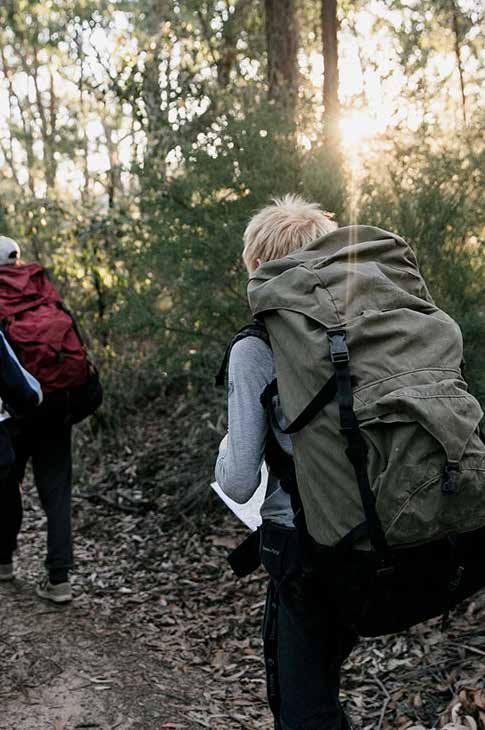
Camp Yarramundi’s outdoor education program is popular with schools, allowing students an opportunity to learn about the bush, connect with each other and challenge themselves. Activities range from team problem solving activities, to high ropes courses, orienteering and archery.
Sydney Olympic Park Lodge, located near Newington Armory, is most used by sporting and community groups. This central location makes it a handy accommodation space for many larger groups, such as youth groups, sporting associations and regional and interstate schools.
One of the highlights of 2022 was the development of the Camp Yarramundi Concept Master Plan.
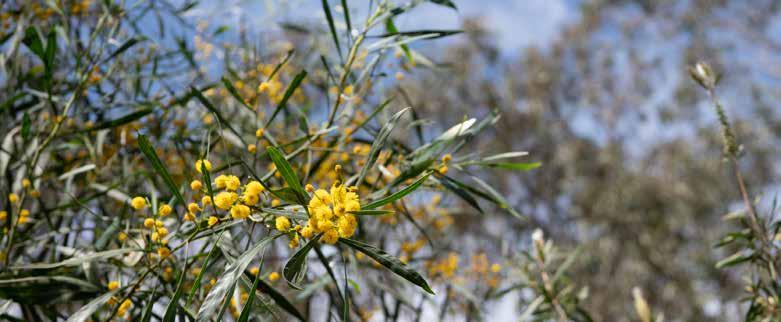
The Y engaged AJC Architects to develop a three-stage master plan for the site with a mix of new and upgraded infrastructure for both accommodation and outdoor education. The plan involves a transformation of the current campsite into a more universally designed and inclusive complex that caters to people of all ages and abilities.
Some of the key infrastructure included in the master plan include:
• Construction of three new accommodation lodges delivering an additional 220 beds across the site
• Decommissioning, demolition and replacement or upgrade of remaining cabins to meet required building and accessibility standards
• Construction of a new kitchen and dining area to support multiple groups simultaneously
• Restoration of river access
• Installation of a cultural garden to serve as both a food source and an educational opportunity for visitors
• Replacement and expansion of all-abilities outdoor programs and activities
• Upgrade of the existing recreation hall to a mixed-use space that can support recreational programs, conferencing, community events, expos and markets
• Construction of outdoor kitchens and an amphitheatre that can support weekend music festivals and other events.
Sydney Olympic Park Lodge (SOPL) was significantly impacted by the COVID-19 lockdowns. With most of its customer base being schools and community groups using the accommodation as a base camp when going to other events, such as the Sydney Royal Easter Show and Schools Spectacular, demand grew slowly once lockdowns lifted.
However, Sydney Olympic Park Authority took advantage of the lockdown to restore Building 123, one of SOPL’s most popular heritage accommodation buildings. The Federation-style double-brick house contains 20 beds in five bedrooms, with a kitchen and bathroom. It was impacted by the effects of movement, causing cracks in the walls. The entire building was stabilised, all repairs completed and the building repainted.
In February, SOPL hosted the Y’s Mardi Gras participants for multiple rehearsals ahead of the parade in March. April welcomed the return of Youth Parliament training camps, with 88 participants onsite across the long weekend to prepare for their July event.
The Sydney Royal Easter Show in April was also the beginning of the return of bookings for SOPL, followed by a surge in bookings to provide a solid start for the next financial year. This is promising, as our lead time is short, but we are optimistic for January to June in 2023.
The increase in bookings has enabled the return of the booking manager position to start by the end of September.
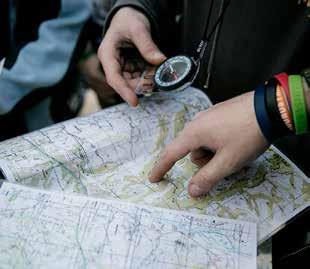
Camp Yarramundi has partnered with the University of Wollongong’s Recovery Camp program since 2013. The impact of this program is significant with:
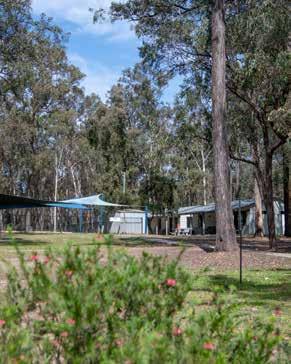
• More than 650 recovery-orientated experiences for those living with mental illness
• Clinical placement for more than 700 nursing students
• The participants in this program are marginalised by mental health issues and face regular hospitalisation. They are also unable to maintain stable employment and are often stigmatised by society and suffer social isolation. Data details that participation in this program reduces incidences of hospitalisation by 67 per cent and reduces the duration by 38 per cent.
While this camp was paused for some time due to the pandemic, it resumed in May 2021. We have since run five Recovery Camps with 455 participants.
We are proud of the important work we are doing in this project and the success seen by many participants.
Our team at Camp Yarramundi are a resilient group, enduring three major floods in the last two years. In March, the second of the three floods struck, with the Grose River quickly rising behind the camp before staff left the site. The camp was closed for 12 days and lost bookings. While the water levels did not reach the cabins, the Boardwalk was damaged, and the river is no longer safe for use due to bank erosion and the danger of trees falling. However, the crew have managed to overcome this, reopening the site and welcoming visitors back to camp.
Outdoor Education and Camping began utilising the RBA framework during the year. This framework is designed to capture insightful data for continuous improvement purposes. A key theme of measurement through our RBA tool is understanding improvements around key metrics such as skills and knowledge, confidence, social connections, safety and more. RBA highlights during the year include 83 per cent of participants reported an increase in their skills knowledge, 81 per cent of participants reported an increase in their confidence and 77 per cent of participants reported an increased sense of belonging.
A cheerful desire to help others achieve and a willingness to take small steps forward are character strengths that shine in 20-year-old camper turned aspiring Group Leader Marnie.

Since the age of seven, Camp Yarramundi has been a big part of Marnie’s life. School was not a happy place so, she said, it was a relief to find things were different at the camp which is set on 21.6ha of natural bushland in the Hawkesbury Valley.
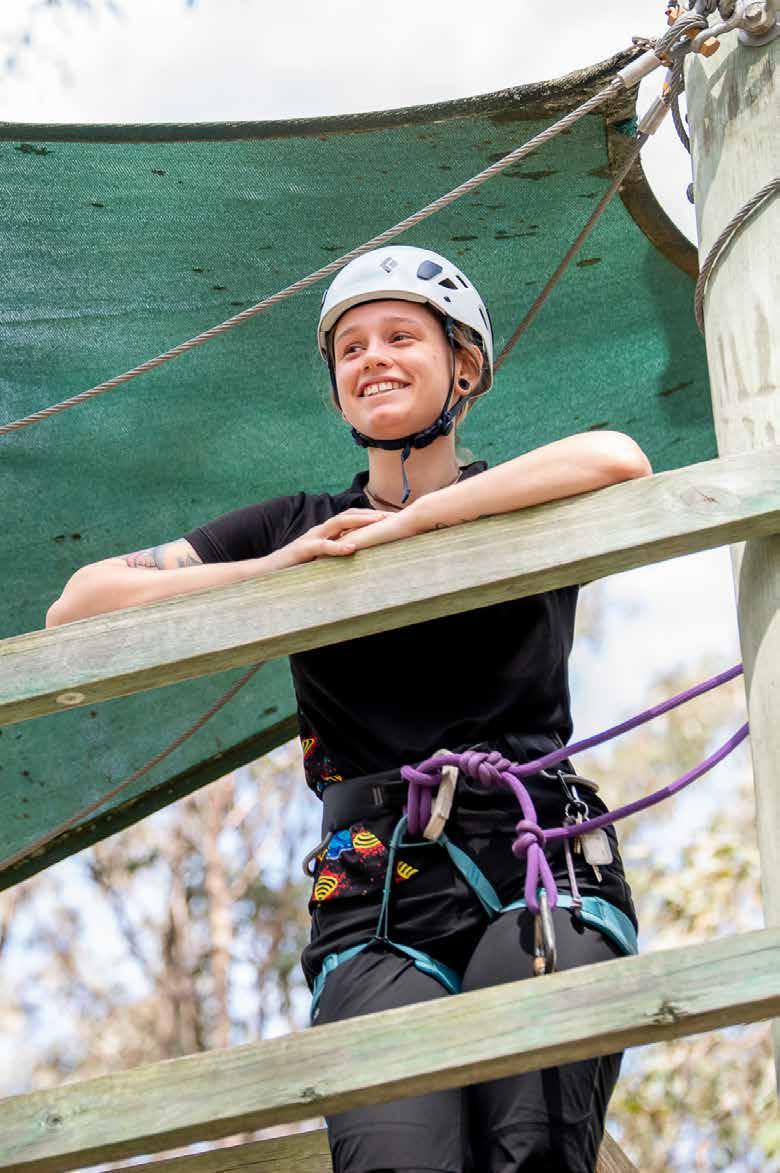
“I struggled a lot with bullying at school,” Marnie said. “The first time went to camp, you couldn’t get me away. I went from a shy reserved kid to an outgoing, bubbly, confident one. All my fondest childhood memories are at Camp. was able to do things I would never have been able to experience had I not gone. I can proudly say it has saved my life.”
Marnie describes how activities like Alpine Rescue taught her navigation, problem-solving, and communication. She also discovered a love of nature and now paints landscapes using watercolours mixed with fresh water gathered from the edge of the Hawkesbury River for her wellbeing.
So impactful were the group leaders to her that she now hopes to become one.
“When I saw an ad for a camp kitchen hand last year, I jumped at the chance to get my foot in the door,” Marnie said. “I love teaching kids and what camping and the outdoors can do for mental health – it’s been one of my coping mechanisms.
“Knowing that I could contribute, like the people met at camp had done, is the most rewarding career could possibly think of.”
Our people are at the heart of everything we do. Working in our out-of-school-care facilities and recreation centres, in our outdoor education and camping venues, community programs or behind the scenes, our skilled workforce is committed to delivering the very best for the people we serve. Across our organisation, our people strive to bring to life the Y’s belief in the power of inspired young people.

There is no doubt this year brought with it challenging times that tested our workforce like never before. From the continued disruption of the COVID-19 pandemic to the unprecedented series of floods across regional and rural NSW, our teams rose to the challenge and responded with resilience, grit and grace. Throughout it all, we made significant progress in strategic plans to build a stronger and more united workforce by developing our Diversity, Equity, Inclusion and Belonging Strategy and Reflect Reconciliation Action Plan. We are energised by our united commitment for a just world and the possibilities before us to foster meaning and purpose for our remarkable workforce and the communities in which we serve.
Our frontline team members were supported in managing conversations around vaccinations with their customers via train-the-trainer sessions facilitated by our Learning and Development team. We launched the Be Kind campaign which promoted kindness amongst our teams, customers and communities as the nation reopened. COVIDSafe work practices remained and continue as a priority. Our people’s commitment to the health and safety of the community is evident with 96 per cent of our people fully vaccinated.
The COVID-19 pandemic transformed our work practices and workplaces. Our people transitioned to a hybrid working environment that has provided flexibility in where and how we work. Digital collaboration tools have enhanced our ways of working enabling the bringing together of geographically dispersed teams to work collaboratively with ease.
During uncertain times, our people were supported with new wellbeing initiatives guided by our leaders, People and Culture and Learning and Development teams. Support was personalised to ensure it aligned to the needs of individuals and teams. The Employee Assistance Program, wellness and mental health webinars, workshops and practical resources were offered and made available to all employees and volunteers.
After numerous lockdowns, the anxiety of returning to a new normal was high. In partnership with the Black Dog Institute, our people were provided with health and wellbeing support specifically designed for times of adjustment to return-to-work arrangements following extended periods of lockdowns and restrictions. The partnership included a series of free webinars and provided practical resources to promote mental health and wellbeing.
We also piloted an initiative called Wellbeing Days in March 2022, to address the increased levels of fatigue of our permanent employees. This initiative provided one day of paid leave per month for our staff to rest, relax and recharge and was well received across the organisation with strong uptake and positive feedback.

This year, we launched our Diversity, Equity, Inclusion and Belonging Strategy Development Roadmap. This strategy, which includes our Reflect Reconciliation Action Plan, has at its heart creating a sense of belonging for all and forms the foundation on which a collaborative, engaging and innovative culture can flourish. The benefits of this work are far-reaching, such as improving our performance, retention, satisfaction and ultimately our customers’ experiences.
The strategy was informed by external research on best practice inclusion procedures and processes, engagement with the Office of Young People and best practice capture of diversity and inclusion data, survey methodologies and measures of success and progress. We have gathered the voices of our employees via our first organisationwide survey which took place in 2021. The survey measured our diversity and inclusion profile and gauged what our workforce ranked as being of importance. The top three areas of focus were identified as being Age, LGBTIQ+ and First Nations. The survey revealed a vibrant and diverse workforce spanning four generations, representing 34 different nationalities and 100 different cultures. It was shown that our people speak 20 different languages, celebrate 24 different faiths and that there is representation from the Wilyajali, Kamilaroi and Gadigal nations. One in two employees are carers, and one in four live with a disability.
Work also began on establishing an Inclusion Council comprised of Y staff members who will be advocates for inclusion across our organisation. Additionally, plans were put in place to make the Inclusion Program from SBS, Australia’s multicultural broadcaster, available for all employees. The Inclusion Program is a leading online inclusion training course designed to help organisations embrace diversity and promote safe and happy workplaces.
In addition to analysing our diversity and inclusion profile, the employee engagement survey also measured the key factors of engagement including manager effectiveness, culture, diversity and inclusion, resilience, and wellbeing. The survey
results highlighted we have a strong safeguarding culture, genuinely caring managers and a collaborative work approach. It also identified areas of focus to ensure we continue to improve the employee experience for our dedicated and committed people who bring their passion and engagement to work every day.
The Y looks forward to running the engagement survey on an annual basis with a view to continuously improving our performance, retention, satisfaction and ultimately our customers’ and team’s experiences.
During the year, the Y joined the collective action to advance Reconciliation for Aboriginal and Torres Strait Islander cultures by commencing the development of our Reflect Reconciliation Action Plan in collaboration with Two Point Co. – an indigenous-owned and operated consultancy group.
Reconciliation is about unity and respect between Aboriginal and Torres Strait Islanders and non-Indigenous Australians. It is about respect for First Nations peoples and culture and valuing justice and equity for all Australians.
As an organisation for young people, we are committed to ensuring we are focused on the challenges faced by all young people and the truth is that young First Nations people face significantly more challenges than nonindigenous young people.1
Led by our Reconciliation Action Plan Working Group, a series of workshops were held with the Board, executive and senior leaders to develop our collective commitments. While there are many steps to take in developing our Reflect RAP, we are committed to consulting, listening, forming partnerships, setting goals, and creating meaningful steps towards progressing reconciliation.
The Reflect Reconciliation Action Plan was submitted to Reconciliation Australia for feedback in 2022 and we look forward to the next stages of our reconciliation journey.
1 https://www.aihw.gov.au/reports/indigenous-australians/atsi-adolescent-youth-health-wellbeing-2018/ contents/summary


As an organisation focused on nurturing the potential of inspired young people, we are committed to ensuring that all children and young people feel safe, and this is brought to life through our National Safeguarding Licencing Standards.
During the year we launched our new safeguarding strategy and framework ‘Feel Safe, Be Safe’ and ran quarterly interactive virtual workshops for leaders.
The workshops brought to life the framework through engaging activities and discussions on best practices.
We developed a Safeguarding Hub that provides our leaders with videos, interactive activities and resources to support them in leading a culture that has safeguarding at the heart of all we do.
In 2021, we launched our new human resources information system called myY. The platform provides leaders with greater visibility of their team members at every stage of the employment lifecycle. Streamlining HR processes across recruitment, onBoarding, job and compensation changes and learning, it empowers managers to take an active role in the development of their teams.
Staff members are enabled to manage their personal information with ease, connect with peers across the organisation and take ownership of their learning and development.
To support our people in their myY learning journey, we created an informative and educational online hub providing quick reference guides, interactive activities and online videos enabling them to navigate the system with ease.
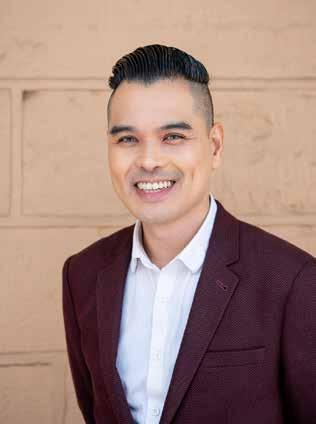
The Y NSW is committed to being a safe and inclusive place where everybody is valued, celebrated and respected — regardless of race, age, language, gender, country of origin, cultural background, religion, sexual orientation or ability. During the year, we proudly developed our Diversity, Equity, Inclusion and Belonging Strategy, including submitting our Reflect Reconciliation Action Plan. The Y NSW joined YWCA Australia for our first ever Mardi Gras Parade. Our vibrant Affinity Network continued to provide employee support while advocating and facilitating a culture of inclusion and raising awareness of LGBTQIA+ people and issues. The Y NSW’s Ability programs have also continued to provide opportunities for people with disability to be active, build confidence and develop skills.
“Marching in the Mardi Gras Parade was the realisation of a long-held dream since our Affinity Network began in 2018. On the LGBTQIA+ community’s biggest stage, our team of 40 dancers shone brightly in the spirit of acceptance, love and respect for all!”

Developed our Diversity, Equity, Inclusion and Belonging Strategy
Submitted our Reflect Reconciliation Action Plan
Affinity Network provided support and advocacy
and GymAbility programs in action
- Bryan Jader, the Y NSW Brand Manager, Co-chair of the Affinity Network and Float Marshall.
We are thankful to our generous supporters who help us bring to life our belief in the power of inspired young people. We also recognise Y Australia, our national body, and member associations across Australia for their support as we work together as a united movement. We are grateful to the World Alliance of YMCAs for their work representing the Y at a global level.
ALCOHOL AND DRUG FOUNDATION (ADF)
ARMIDALE REGIONAL COUNCIL
ARTS AND CULTURAL EXCHANGE (ACE)
AUSTRALIA POST
AUSTRALIAN GOVERNMENT
BARA BARANG
BARANG REGIONAL ALLIANCE
BELLINGEN SHIRE COUNCIL
THE BENEVOLENT SOCIETY
BLAYNEY SHIRE COUNCIL
BROKEN HILL CITY COUNCIL
CAMDEN COUNCIL
CAMDEN HIGH SCHOOL
CENTRAL COAST COMMUNITY COLLEGE
CENTRAL COAST COMMUNITY COUNCIL
CENTRAL COAST COUNCIL
CENTRAL COAST LEAGUES CLUB
CITY OF PARRAMATTA
CITY OF RYDE
COUNTRY UNIVERSITY SERVICE
CUMBERLAND HIGH SCHOOL
NSW DEPARTMENT OF COMMUNITIES AND JUSTICE
NSW DEPARTMENT OF EDUCATION
DUNDAS AREA NEIGHBOURHOOD CENTRE
ENTERPRISE PLUS
FOUNDATION FOR RURAL AND REGIONAL RENEWAL (FRRR)
GLOBAL SKILLS
GOROKAN HIGH SCHOOL
GRAND PACIFIC HEALTH
HAWKESBURY CITY COUNCIL
HEADSPACE
NSW HEALTH
HOPE CONNECT
HOPETOWN SCHOOL
HUME COMMUNITY HOUSING ASSOCIATION
IGA KANWAL
JBWERE
KOOLYANGARRA ABORIGINAL CHILD AND FAMILY CENTRE
KU-RING-GAI COUNCIL
LINKS YOUTH SUPPORT SERVICES
MATANA FOUNDATION FOR YOUNG PEOPLE
MIDCOAST COUNCIL
MINGARA RECREATION CLUB
MISSION AUSTRALIA
MONARO COMMUNITY ACCESS SERVICE
MONARO EARLY INTERVENTION SERVICE

MONARO FAMILY SUPPORT SERVICE
MONARO HIGH SCHOOL
NARARA VALLEY HIGH SCHOOL SUPPORT UNIT
NEPEAN COMMUNITY AND NEIGHBOURHOOD SERVICES
NEPEAN COMMUNITY COLLEGE
NIB FOUNDATION
NORTH GOSFORD LEARNING CENTRE
NORTHLAKES HIGH SCHOOL
NSW GOVERNMENT
NSW POLICE
OBERON COUNCIL
OFFICE FOR REGIONAL YOUTH
PCYC (BROKEN HILL)
PLATFORM YOUTH SERVICES
PORT MACQUARIE-HASTINGS COUNCIL
RESILIENCE NSW
ROBINSON COLLEGE
ROTARY INTERNATIONAL
SNOWY MONARO COUNCIL
SNOWY MOUNTAINS CHRISTIAN SCHOOL
ST GEORGE COMMUNITY HOUSING
ST PATRICK’S CATHOLIC SCHOOL
SUNCORP FOUNDATION
SYDNEY OLYMPIC PARK AUTHORITY
TAFE NSW
TAREE HIGH SCHOOL
TELOPEA LOCAL DRUG ACTION TEAM (LDAT)
THE ENTRANCE HIGH SCHOOL SUPPORT UNIT
THE LAKES COLLEGE – YOUTH OFF THE STREETS
TLK YOUTH COLLEGE
TOUKLEY NEIGHBOURHOOD CENTRE
UNITING NSW/ACT
UNIVERSITY OF NEWCASTLE
VINNIES

WARATAH EDUCATION FOUNDATION
WESTERN SYDNEY UNIVERSITY
WHITELION
WYONG RUGBY LEAGUE CLUB GROUP
YMCA DU QUEBEC
YOUTH OFF THE STREETS





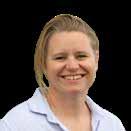







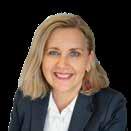



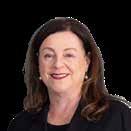
 GEORGE PERRY Director since 2020
JEREMY SANDBROOK Director since 2020 DAVID MCKENNA Director since 2021
HELEN WILD Director since 2021
JASON KING Director since 2021
PRUE WARRILOW Director since 2020
RICHARD HUGHES Director since 2014 CHRISTINA HARLAMB Director since 2016
NICOLE RIEVELEY Director since 2018 LEIGH JOHNS OAM Director since 2019 TIMOTHY SUNWOO Director since 2020
SUSANNAH LE BRON
Chief Executive Officer
LOUISA MCKAY Executive Leader Youth and Community/Purpose and Impact
MARC HASSAN Executive Leader Finance and IT
MICHAEL NOAKES Executive Leader Risk and Safety NATALIE THOMAS Executive Leader People and Culture BROOKE ATKINS Executive Leader Business Delivery and Support
GEORGE PERRY Director since 2020
JEREMY SANDBROOK Director since 2020 DAVID MCKENNA Director since 2021
HELEN WILD Director since 2021
JASON KING Director since 2021
PRUE WARRILOW Director since 2020
RICHARD HUGHES Director since 2014 CHRISTINA HARLAMB Director since 2016
NICOLE RIEVELEY Director since 2018 LEIGH JOHNS OAM Director since 2019 TIMOTHY SUNWOO Director since 2020
SUSANNAH LE BRON
Chief Executive Officer
LOUISA MCKAY Executive Leader Youth and Community/Purpose and Impact
MARC HASSAN Executive Leader Finance and IT
MICHAEL NOAKES Executive Leader Risk and Safety NATALIE THOMAS Executive Leader People and Culture BROOKE ATKINS Executive Leader Business Delivery and Support
The directors present their report on Young Men’s Christian Association of Sydney (referred to hereafter as “YMCA NSW” or the “Association”) for the year ended 30 June 2022.
The following persons were Directors of Young Men’s Christian Association of Sydney, unless otherwise stated, during the whole of the financial year and up to the date of this report: Richard Hughes, Christina Harlamb, Nicole Smith, Leigh Johns, Timothy Sunwoo, David McKenna, George Perry, Jeremy Sandbrook, Prue Warrilow, Helen Wild and Jason King.
During the year the principal continuing activities of YMCA NSW consisted of fitness, swim and sports centre management, camping, out of school hours care and community programs. There was no significant change in the nature of the activity of YMCA NSW during the year.
Our purpose believing in the power of inspired young people continues to be central in all that we do. In the last 12 months, the YMCA NSW has focused on continuing its strong connections to communities across NSW and the ACT. While the pandemic was devastating on many fronts it also provided an opportunity to do things differently.
We are proud of the significant number of young people we were able to provide programs and services to through virtual classes, online forums and support groups.
The COVID-19 related Government restrictions imposed during FY21/22 continued to cause disruption to business and economic activity. All YMCA NSW recreation sites were closed from 1 July to mid-October 2021 due to the enforced lockdowns. Camping sites were heavily impacted with minimal bookings until Q3 due to restrictions on school excursions. Children’s Services were operating at minimal capacity.
Government funded subsidies were received in FY21/22 such as NSW JobSaver, Business Continuity Payments (BCP) for Children’s Services and Sport and Recreation Support funds through NSW Office of Sport. Operational business units
rebounded from the adverse impacts of the lockdowns, with fitness, aquatics and sports centres resuming full operations from Q3, however, there were minor disruptions to operations due to flood closures.
Y NSW’s Children’s Services continued to go from strength to strength throughout the year. Our teams are to be commended for their dedication in preparing the centres for the accreditation process and the strong results which followed. This included 94 per cent of our services achieving a result of Exceeding or Meeting the National Quality Standard.
The operating loss from ordinary activities for the year ending 30 June 2022 amounted to $3,541,522 (2021 profit: $7,957,745). Total comprehensive income for the year amounted to a surplus $1,375,777 (2021 surplus $9,867,745) resulting from changes in asset revaluation reserve, due to increases in valuations of Penrith, Yarramundi and Broken Hill assets of land and buildings.
ACNC Regulations (s60.15) require medium and large charities to comply with the Corporations Act 2001 which requires directors to consider whether there are material uncertainties that would lead to significant doubt about a company’s ability to continue to pay its debts over at least the next 12 months. Forecasts and cash flow projections to 31 October 2023 indicate YMCA NSW can operate for a period exceeding 12 months.
When restrictions lifted and it was safe to do so, we resumed all our Community Recreation and Youth and Community programs. Across our state, hundreds of people of all ages and abilities embraced the joy of our aquatics, fitness and sporting programs. Streetgym was welcomed back offering physical activity and wellbeing programs for young people across Mt Annan, the Central Coast and Western Sydney. Additionally, our teams supported dozens of young people who find it challenging in traditional learning environments to undertake employment accreditation workshops. And in our Outdoor Education and Camping portfolio, we were pleased the important work could continue at Camp Yarramundi, in partnership with the University of Wollongong’s Recovery Camp, to provide recovery-orientated experiences for young people living with mental illness.
There have been no other significant changes in the state of affairs of YMCA NSW during the year.
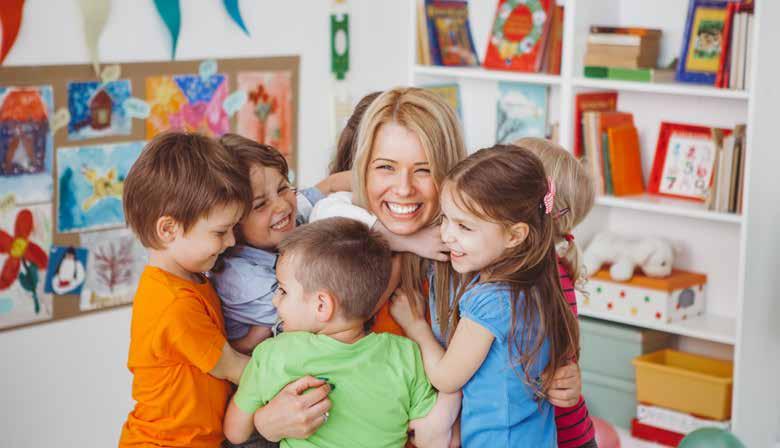
No other matter or circumstance has arisen since 30 June 2022 that has significantly affected YMCA NSW’s operations, results or state of affairs or may do so in future years.
The impact of further disruption on future operations due to COVID-19 has been included
in the 2023 budget. Further information on likely developments in the operations of the YMCA NSW and the expected results of operations have not been included in this annual report because the Directors believe it would be likely to result in unreasonable prejudice to YMCA NSW.
YMCA NSW is not affected by any significant environmental regulation in respect of its operations.
The number of meetings of YMCA NSW’s board of Directors and of each board committee held during the year ended 30 June 2022, and the number of meetings attended by each Director were:
Meetings of committees
Board meetings Risk, audit and finance committee People and culture committee
A B A B A B
Prue Warrilow 6 7 - - 5 5
Richard Hughes 7 7 5 5 - -
Christina Harlamb 7 7 5 5
Nicole Smith 5 7 5 5
Leigh Johns 6 7 4 4
Timothy Sunwoo 6 7 4 5
Jeremy Sandbrook 5 7 3 5 5 5
Helen Wild 7 7 5 5
Jason King 7 7 3 5
George Perry 6 7 5 5
David McKenna 7 7 5 5
A = Number of meetings attended
B = Number of meetings held during the time the Directors held office during the year
PwC continues in office in accordance with section 327 of the Corporations Act 2001.
During the financial year, Young Men’s Christian Association of Sydney paid a premium to insure the Directors and Secretaries of YMCA NSW, Executive Leaders and the General Managers of each of the divisions of YMCA NSW.
The liabilities insured are legal costs that may be incurred in defending civil or criminal proceedings that may be brought against the officers in their capacity as officers of entities in YMCA NSW, and any other payments arising from liabilities incurred by the officers in connection with such proceedings. This does not include such liabilities that arise from conduct involving a wilful breach of duty by the officers or the improper use by the officers of their position or of information to gain advantage for themselves or someone else or to cause detriment to YMCA NSW. It is not possible to apportion the premium between amounts relating to the insurance against legal costs and those relating to other liabilities.
A copy of the auditor’s independence declaration as required under section 60-40 of the Australian Charities and Not-for-Profit Commission (ACNC) Act 2012 is set out on page 5.
This report is made in accordance with a resolution of Directors.
Manoj Santiago PartnerDated: 28 October 2022
FOR THE YEAR ENDED 30 JUNE 2022
Notes 2022 ($) 2021 ($)
FOR THE YEAR ENDED 30 JUNE 2022
Notes 2022 ($) 2021 ($)
Continuing operations
Revenue from contract with customers 5a 51,199,123 59,753,706
Other income 5b 12,850,830 22,243,476
Activity and program costs (3,177,758) (3,479,322)
Employee benefits expenses (42,306,168) (48,808,984)
Depreciation and amortisation expenses (2,058,962) (2,218,955)
Community program expenses (618,313) (591,101)
Other expenses 6 (19,526,675) (18,958,501)
Finance income / (expense) - net 6 96,401 17,426
Operating profit / (loss) before income tax (3,541,522) 7,957,745
Income tax expense - -
Operating profit / (loss) for the year (3,541,522) 7,957,745
Other comprehensive income
Changes in asset revaluation reserve 4,917,299 1,910,000
Other comprehensive income for the year, net of tax 12 4,917,299 1,910,000
Total comprehensive surplus for the year 1,375,777 9,867,745 The above statement of cash flows should be read in conjunction with the accompanying notes.
ASSETS
Current assets
Cash and cash equivalents 7 10,100,056 12,239,699 Trade and other receivables 8 5,373,891 1,827,907
Inventories 9 492,389 416,373
Term deposits 12,591,634 12,567,123 Financial assets at FVPL 11 8,996,488 9,568,966
Other current assets 10 589,263 1,107,304
Total current assets 38,143,721 37,727,372
Non-current assets Financial assets at FVPL 11 97,709 100,128
Property, plant and equipment 12 21,513,505 16,763,467 Right-of-use assets 13 1,250,451 1,406,273 Intangible assets 14 25,806
Total non-current assets 22,861,665 18,295,674
TOTAL ASSETS 61,005,386 56,023,046
The above statement of cash flows should be read in conjunction with the accompanying notes.
FOR THE YEAR ENDED 30 JUNE 2022
Current liabilities
FOR THE YEAR ENDED 30 JUNE 2022
Notes 2022 ($) 2021 ($)
Notes
Other reserves ($) Accumulated surplus ($) Total equity ($)
Balance at 1 July 2020 3,508,415 22,682,345 26,190,760
Surplus for the year 7,957,745 7,957,745
Trade and other payables 15 9,965,604 8,417,117 Borrowings 16 6,155 6,155 Contract liabilities - Income in advance 17 3,600,643 2,255,539 Provisions 18 2,121,699 1,361,859 Employee benefit obligations 19 4,276,541 3,741,690
Lease liabilities 20 530,714 742,000
Total current liabilities 20,501,356 16,524,360
Non-current liabilities
Trade and other payables 15 258,154 187,120 Provisions 18 1,275,477 1,751,958 Employee benefit obligations 19 663,866 768,489 Lease liabilities 20 872,251 732,614
Total non-current liabilities 3,069,748 3,440,181
Changes in asset revaluation reserve 1,910,000 1 ,910,000
Total comprehensive surplus for the year 1,910,000 7,957,745 9,867,745
Transactions with owners in their capacity as owners:
Balance at 30 June 2021 21b 5,418,415 30,640,090 36,058,505
Balance at 1 July 2021 5,418,415 30,640,090 36,058,505
Deficit for the year - (3,541,522) (3,541,522)
Changes in asset revaluation reserve 4,917,299 - 4 ,917,299
Total comprehensive surplus for the year 4 ,917,299 (3,541,522) 1,375,777
Transactions with owners in their capacity as owners: - - -
Balance at 30 June 2022 21b 10,335,714 27,098,568 37,434,282
TOTAL LIABILITIES 23,571,104 19,964,541
NET ASSETS 37,434,282 36,058,505
EQUITY
Other reserves 21(a) 10,335,714 5,418,415
30,640,090
The above statement of cash flows should be read in conjunction with the accompanying notes.
FOR THE YEAR ENDED 30 JUNE 2022
Notes 2022 ($) 2021 ($)
Receipts from customers (inclusive of GST) 62,584,325 73,763,550
Receipts from government 4,905,156 14,608,136
Payments to suppliers and employees (inclusive of GST) (68,458,365) (75,555,821) (968,884) 12,815,865
Interest received 177,695 155,643
Interest paid (81,294) (138,217)
Net cash (outflow) / inflow from operating activities 28 (872,483) 12,833,291
Payments for property, plant and equipment (1,100,777) (1,069,953)
Payment for financial assets investments (9,000,000)
Term deposit investments 12,591,634 12,567,123
Proceeds from redemption of term deposit (11,994,644) (6,901,181)
Net cash outflow from investing activities (503,787) (4,404,011)
This note provides a list of the significant accounting policies adopted in the preparation of these financial statements to the extent they have not already been disclosed in the other notes below. These policies have been consistently applied to all the years presented, unless otherwise stated. The financial statements are for the Young Men’s Christian Association of Sydney (trading and referred to hereafter as “YMCA NSW” or “the Association”).
These general purpose financial statements have been prepared in accordance with Australian Accounting Standards and Interpretations issued by the Australian Accounting Standards Board, the Australian Charities and Not-for-profits Commission Act 2012 and associated regulations, as appropriate for not-for-profit oriented entities.
(i) Compliance with Australian Accounting Standards - Simplified Disclosure Requirements
The financial statements of the Young Men’s Christian Association of Sydney comply with Australian Accounting Standards - Simplified Disclosure Requirements as issued by the Australian Accounting Standards Board (AASB).
YMCA NSW has determined that where it is engaged to operate contract sites on behalf of the sites owner (typically a local Council), it is in the capacity of a principal rather than an agent. On this basis the financial statements of YMCA NSW do include assets, liabilities, revenue and expenses incurred in managing the contract sites.
(ii)
Repayment of lease liabilities (763,373) ( 1,068,970)
Repayment of borrowings ( 24,590)
Net cash outflow from financing activities (763,373) (1,093,560)
These financial statements have been prepared under the historical cost basis, for certain assets, which as noted are at revalued amount.
YMCA NSW has applied the following standards and amendments in their annual reporting period commencing 1 July 2021:
IFRIC Cloud Accounting
Net (decrease) / increase in cash and cash equivalents (2,139,643) 7,335,719
Cash and cash equivalents at the beginning of the year 12,239,699 4,903,980
Cash and cash equivalents at end of year 7 10,100,056 12,239,699
The above statement of cash flows should be read in conjunction with the accompanying notes.
A new IFRIC interpretation (“Configuration and Customisation (‘CC’) costs in a Cloud Computing Arrangement”) was released in April 2021, requiring the re-examination of the intangible assets capitalised by the YMCA NSW, particularly in relation to the new HR system which was implemented over the past couple of years. The outcome of this assessment required the expensing of items that would previously have
been capitalised, including implementation costs for SAAS providers where we do not own the solution delivered, Data migration costs and various other items not meeting the definition of an asset. Management has completed an assessment taking into account the decision tree to assess the IT costs which have been capitalised over the past few years.
(ii) New standards and interpretations in issue and effective:
AASB 1060 General Purpose Financial Statements
- Simplified Disclosures for 1 July 2021
For-Profit and Not-for-Profit Tier 2 entities
(i)
Items included in the financial statements are measured using the currency of the primary economic environment in which the entity operates (‘the functional currency’). The financial statements are presented in Australian dollars ($), which is Young Men’s Christian Association of Sydney’s functional and presentation currency.
Foreign currency transactions are translated into the functional currency using the exchange rates at the dates of the transactions. Foreign exchange gains and losses resulting from the settlement of such transactions and from the translation of monetary assets and liabilities denominated in foreign currencies at year end exchange rates are generally recognised in profit or loss. They are deferred in equity if they relate to qualifying cash flow hedges and qualifying net investment hedges or are attributable to part of the net investment in a foreign operation.
Foreign exchange gains and losses that relate to borrowings are presented in the statement of profit and loss and other comprehensive income, within finance costs. All other foreign exchange gains and losses are presented in the statement of profit and loss and other comprehensive income on a net basis within other gains/(losses).
AASB 15 establishes a five-step model to account for revenue arising from contracts with customers and requires that revenue be recognised at an amount that reflects the consideration to which an entity expects to be entitled in exchange for transferring goods or services to a customer.
YMCA NSW has generally concluded that it is the principal in its revenue arrangements because it
typically controls the goods and services before transferring them to the customer.
Revenue is recognised for the major business activities using the methods outlined below.
Revenues from activity, program and hire are recognised upon delivery of the service to the customer. Membership fees comprise annual/ three monthly subscriptions and are recognised over time as revenue on a monthly basis over the period of membership.
Revenue from the sale of merchandise is recognised in the statement of profit and loss and other comprehensive income when the significant risks and rewards of ownership have been transferred to the buyer.
Donations and fund raising activities represent monies received into YMCA NSW’s bank account.
Interest income is recognised using the effective interest method.
Grants from the government are recognised at their fair value where there is a reasonable assurance that the grant will be received and YMCA NSW will comply with all attached conditions. Government assistance income is recognised when YMCA NSW fulfills its obligations and obtains control of the funding.
YMCA NSW holds an authority (expiring on 3 Sep 2025) to fundraising under section 13A of the Charitable Fundraising Act 1991, subject to compliance with the Act, the Charitable Fundraising Regulation 2015 and the conditions attached which authorises to appeal to the public for funds. Housie or bingo means a gaming activity (a) that is played by 1 or more participants using cards or a device with numbered spaces or symbols, (b) during which numbered spaces or symbols identified randomly and announced are marked off by each participant who has a card or device on which the numbered space or symbol is displayed and (c) that is won by the participant who is first able to mark off all numbered spaces or symbols on the card or device that are required to be marked off for a win.
YMCA NSW manages a number of contract sites on behalf of Councils/Universities. AASB 15 defines the Principal in a transaction as the entity which has control of the goods/service prior to the transfer to the customer which should be recognised in the financial statements on a gross rather than net basis. YMCA NSW management has determined that they act as the Principal in these contracts. Third Party contributions relates to operational deficit funding by the Council partners based on agreed budgets or pricing schedules as per the contract. It also includes contributions such as Profit sharing arrangements (Surplus to Budget) and additional operational deficit funding in a force majeure situation based on the contract terms.
Based on the nature of its activities being not for profit, YMCA NSW is exempt from income tax under Section 50-5 of the Income Tax Assessment Act 1997 and accordingly no provision has been made for income tax.
YMCA NSW assesses whether a contract is or contains a lease, at inception of the contract. YMCA NSW recognises a right-of-use asset and a corresponding lease liability with respect to all lease arrangements in which it is the lessee, except for short-term leases (defined as leases with a lease term of 12 months or less) and leases of low value assets (such as tablets and personal computers, small items of office furniture and telephones). For these leases, YMCA NSW recognises the lease payments as an operating expense on a straight-line basis over the term of the lease unless another systematic basis is more representative of the time pattern in which economic benefits from the leased assets are consumed.
The term of the leases for out of school hours care sites is based on the proportion of hours accessible compared to the total of hours in a year.
The lease liability is initially measured at the present value of the lease payments that are not paid at the commencement date, discounted by using the rate implicit in the lease. If this rate cannot be readily determined, the lessee uses its incremental borrowing rate.
Lease payments included in the measurement of the lease liability comprise:
• Fixed lease payments (including in-substance fixed payments), less any lease incentives receivable;
• Variable lease payments that depend on an index or rate, initially measured using the index or rate at the commencement date;
• The amount expected to be payable by the lessee under residual value guarantees;
• The exercise price of purchase options, if the lessee is reasonably certain to exercise the options;
• Payments of penalties for terminating the lease, if the lease term reflects the exercise of an option to terminate the lease.
The lease liability is presented as a separate line in the statement of financial position. YMCA NSW’s discount rates are based on asset class. However, the need for asset level adjustments required for new leases onboarded have been reconsidered by management as of and from 1 July 2020, which is based on the following:
• Often corporate debt funding is sourced on a consolidated basis, versus asset by asset basis, which means financiers are considering the entire asset and cashflow position of a business in their assessment of credit;
• If an incremental borrowing rate is determined it is usually done so with reference to the consolidated position / credit rating which already takes into account the asset position.
The lease liability is subsequently measured by increasing the carrying amount to reflect interest on the lease liability (using the effective interest method) and by reducing the carrying amount to reflect the lease payments made.
The right-of-use assets comprise the initial measurement of the corresponding lease liability, lease payments made at or before the commencement day, less any lease incentives received and any initial direct costs. They are subsequently measured at cost less accumulated depreciation and impairment losses. Whenever YMCA NSW incurs an obligation for costs to dismantle and remove a leased asset, restore the site on which it is located or restore the underlying asset to the condition required by the terms and conditions of the lease, a provision is recognised and measured under AASB 137 ‘Provisions, Contingent Liabilities and Contingent Assets’. The Rightof-Use assets are depreciated over the shorter period of lease term and useful life of the underlying asset.
Assets are tested for impairment whenever events or changes in circumstances indicate that the carrying amount may not be recoverable. An impairment loss is recognised for the amount by which the asset’s carrying amount exceeds its recoverable amount. The recoverable amount is the higher of an asset’s fair value less costs of disposal and value in use. For the purposes of assessing impairment, assets are grouped at the lowest levels for which there are separately identifiable cash inflows which are largely independent of the cash inflows from other assets or groups of assets (cash-generating units).
Non-financial assets other than goodwill that suffered an impairment are reviewed for possible reversal of the impairment at the end of each reporting year.
For the purpose of presentation in the statement of cash flows, cash and cash equivalents includes cash on hand, deposits held at call with financial institutions, other short-term, highly liquid investments with original maturities of three months or less that are readily convertible to known amounts of cash and which are subject to an insignificant risk of changes in value, and bank overdrafts.
Trade and other receivables include amounts due from customers for goods sold and services performed in the ordinary course of business. These are generally due for settlement within 30 days and therefore are all classified as current.
YMCA NSW applies the AASB 9 ‘Financial Instruments’ simplified approach to measuring expected credit losses which uses a lifetime expected loss allowance for all trade receivables and contract assets. To measure the expected credit losses, trade receivables and contract assets have been grouped based on shared credit risk characteristics and the days past due.
Trade receivables and contract assets are written off when there is no reasonable expectation of recovery.
Inventories are stated at the lower of cost and net realisable value. Cost is based on transfer prices set at the beginning of the year. Net realisable value is the estimated selling price in the ordinary course of business less the estimated costs of completion and the estimated costs necessary to make the sale.
From 1 July 2021, YMCA NSW classifies its financial assets in the following measurement categories:
• those to be measured subsequently at fair value (either through Other Comprehensive Income (‘OCI’) or through profit or loss), and
• those to be measured at amortised cost.
For assets measured at fair value, gains and losses will be recorded in profit or loss.
The classification depends on YMCA NSW’s business model for managing the financial assets and the contractual terms of the cash flows. YMCA NSW reclassifies debt investments when and only when its business model for managing those assets changes.
Regular way purchases and sales of financial assets are recognised on trade-date, the date on which YMCA NSW commits to purchase or sell the asset. Financial assets are derecognised when the rights to receive cash flows from the financial assets have expired or have been transferred and YMCA NSW has transferred substantially all the risks and rewards of ownership.
When securities classified as available-for-sale are sold, the accumulated fair value adjustments recognised in other comprehensive income are reclassified to profit or loss as gains and losses from investment securities.
At initial recognition, YMCA NSW measures a financial asset at its fair value plus, in the case of a financial asset at amortised cost, transaction costs that are directly attributable to the acquisition of the financial asset. Transaction costs of financial assets carried at fair value through profit or loss (‘FVPL’) are expensed in profit or loss.
Subsequent measurement of debt instruments depends on YMCA NSW’s business model for managing the asset and the cash flow characteristics of the asset. There are two measurement categories into which YMCA NSW classifies its debt instruments:
• Amortised cost: Assets that are held for collection of contractual cash flows where those cash flows represent solely payments of principal and interest are measured at amortised cost. Interest income from these
financial assets is included in finance income using the effective interest rate method. Any gain or loss arising on derecognition is recognised directly in profit or loss and presented in other gains/(losses) together with foreign exchange gains and losses. Impairment losses are presented as separate line item in the statement of profit and loss and other comprehensive income.
• FVPL: Assets that do not meet the criteria for amortised cost or fair value through other comprehensive income (‘FVOCI’) are measured at FVPL. A gain or loss on a debt investment that is subsequently measured at FVPL is recognised in profit or loss and presented net within other gains/(losses) in the period in which it arises.
YMCA NSW subsequently measures all equity investments at fair value. Changes in the fair value of financial assets at FVPL are recognised in other gains/(losses) in the statement of profit and loss and other comprehensive income as applicable.
From 1 July 2018, YMCA NSW assesses on a forward looking basis the expected credit losses associated with its debt instruments carried at amortised cost. The impairment methodology applied depends on whether there has been a significant increase in credit risk.
For trade receivables, YMCA NSW applies the simplified approach permitted by AASB 9 ‘Financial Instruments’, which requires expected lifetime losses to be recognised from initial recognition of the receivables, see note (h) for further details.
Financial assets consist of term deposits and investments in shares of stocks. Term deposits have maturity of more than three months and are classified as current assets in the statement of financial position. Investments in shares of stocks are from listed and unlisted companies in Australia. This is classified as non-current assets in the statement of financial position.
Freehold land and buildings are recognised at fair value based on periodic, but at least triennial, valuations by external independent valuers, less subsequent depreciation for buildings. In periods where the freehold land and buildings are not subject to an independent valuation, the Directors may conduct Directors’ valuations to ensure the
carrying amount for the land and buildings is not materially different to the fair value.
Increases in the carrying amount arising on revaluation of land and buildings are credited to an asset revaluation reserve in equity. Decreases that offset previous increases of the same assets are charged against the asset revaluation reserve directly in equity. All other decreases are charged to the statement of profit and loss and other comprehensive income.
Property, plant and equipment is stated at historical cost less depreciation or fair value less, where applicable, any accumulated depreciation and impairment losses. Historical cost includes expenditure that is directly attributable to the acquisition of the items.
Subsequent costs are included in the asset’s carrying amount or recognised as a separate asset, as appropriate, only when it is probable that future economic benefits associated with the item will flow to YMCA NSW and the cost of the item can be measured reliably. The carrying amount of any component accounted for as a separate asset is derecognised when replaced. All other repairs and maintenance are charged to profit or loss during the reporting year in which they are incurred.
Depreciation is calculated using the straight-line method over the estimated useful lives of the assets. Depreciation begins in the month the asset is placed in service. The rates are applied based on the following asset classes:
• Building and leasehold improvements: 2.5% to 10%
• Plant and equipment: 10% to 33%
The assets’ residual values and useful lives are reviewed, and adjusted if appropriate, at the end of each reporting year. An asset’s carrying amount is written down immediately to its recoverable amount if the asset’s carrying amount is greater than its estimated recoverable amount (note 1(f)). Gains and losses on disposals are determined by comparing proceeds with carrying amount. These are included in profit or loss.
Intangible assets with finite useful lives that are acquired separately are carried at cost less accumulated amortisation and accumulated impairment losses. Amortisation is recognised on a straight-line basis over their estimated lives (customer lists are amortised over 2 years).
These amounts represent liabilities for goods and services provided to YMCA NSW prior to the end of financial year which are unpaid. The amounts are unsecured and are usually paid within 30 days of recognition. Trade and other payables are presented as current liabilities unless payment is not due within 12 months from the reporting date.
Borrowings are initially recognised at fair value, net of transaction costs incurred. Borrowings are subsequently measured at amortised cost. Any difference between the proceeds (net of transaction costs) and the redemption amount is recognised in profit or loss over the year of the borrowings using the effective interest method. Fees paid on the establishment of loan facilities are recognised as transaction costs of the loan to the extent that it is probable that some or all of the facility will be drawn down. In this case, the fee is deferred until the draw down occurs. To the extent there is no evidence that it is probable that some or all of the facility will be drawn down, the fee is capitalised as a prepayment for liquidity services and amortised over the year of the facility to which it relates.
Borrowings are removed from the statement of financial position when the obligation specified in the contract is discharged, cancelled or expired. The difference between the carrying amount of a financial liability that has been extinguished or transferred to another party and the consideration paid, including any non-cash assets transferred or liabilities assumed, is recognised in profit or loss as other income or finance costs.
Borrowings are classified as current liabilities unless YMCA NSW has an unconditional right to defer settlement of the liability for at least 12 months after the reporting year.
Provisions are recognised when YMCA NSW has a present legal or constructive obligation as a result of past events, it is probable that an outflow of resources will be required to settle the obligation and the amount can be reliably estimated. Provisions are not recognised for future operating losses. Where there are a number of similar obligations, the likelihood that an outflow
will be required in settlement is determined by considering the class of obligations as a whole. A provision is recognised even if the likelihood of an outflow with respect to any one item included in the same class of obligations may be small.
Provisions are measured at the present value of management’s best estimate of the expenditure required to settle the present obligation at the end of the reporting year.
Liabilities for wages and salaries, including nonmonetary benefits and annual leave that are expected to be settled wholly within 12 months after the end of the period in which the employees render the related service are recognised in respect of employees’ services up to the end of the reporting period and are measured at the amounts expected to be paid when the liabilities are settled. The liabilities are presented as current employee benefit obligations in the statement of financial position.
A provision for long service leave is recognised after five years of service on a pro-rata basis and is measured at current rates, plus related on costs.
The obligations are presented as current liabilities in the statement of financial position if the entity does not have an unconditional right to defer settlement for at least twelve months after the reporting date, regardless of when the actual settlement is expected to occur.
Contributions made to employee defined contribution funds are charged as an expense as the contributions are paid or become payable.
Revenues, expenses and assets are recognised net of the amount of associated GST, unless the GST incurred is not recoverable from the taxation authority. In this case it is recognised as part of the cost of acquisition of the asset or as part of the expense.
Receivables and payables are stated inclusive of the amount of GST receivable or payable. The net amount of GST recoverable from, or payable to, the taxation authority is included with other receivables or payables in the statement of financial position.
Cash flows are presented on a gross basis. The GST components of cash flows arising from investing or financing activities which are recoverable from, or payable to the taxation authority, are presented as operating cash flows.
The changes in accounting policies applied by YMCA NSW and respective impact are described in Note 1 (a) (iii).
(A) MARKET RISK
(i) Cash flow and fair value interest rate risk
YMCA NSW’s exposure to interest rate risk arises predominantly from assets bearing variable interest rates, which includes cash balances held in banks. As interest income does not make up the main source of revenue, management expects no significant interest rate risk on these balances.
Level 1 Level 2 Level 3 Total
At 30 June 2022 $ $ $ $
Financial assets at FVPL 8,996,488 8,996,488
Investment in shares - - 97,709 97,709
Total financial assets 8,996,488 - 97,709 9,094,197
At 30 June 2021 $ $ $ $
Financial assets at FVPL 9,568,966 - - 9,568,966
Investment in shares - - 100,128 100,128
Total financial assets 9,568,966 100,128 9,669,094
Level 1 Level 2
(B)
(i) Fair value hierarchy
This section explains the judgements and estimates made in determining the fair values of the financial instruments that are recognised and measured at fair value in the financial statements. To provide an indication about the reliability of the inputs used in determining fair value, YMCA NSW has classified its financial instruments into the three levels prescribed under the accounting standards. An explanation of each level follows underneath the table.
Level 1: The fair value of financial instruments traded in active markets (such as publicly traded derivatives and equity securities) is based on quoted market prices at the end of the reporting year. The quoted market price used for financial assets held by YMCA NSW is the current bid price. These instruments are included in level 1.
• At 30 June 2022, YMCA NSW’s investment portfolio amounted to $8,996,488 which are diversified across different asset classes and subsequently measured at fair value. This Investment can qualify as cash equivalent and highly liquid as they have a short maturity of three months or less from the date of acquisition. Changes in the fair value of financial assets at FVPL are recognised in other gains/(losses) in the statement of profit and loss and other comprehensive income as applicable. Interest income from financial assets at FVPL is included in the net fair value gains/(losses).
Level 2: The fair value of financial instruments that are not traded in an active market (for example, over-thecounter derivatives) is determined using valuation techniques which maximise the use of observable market data and rely as little as possible on entity-specific estimates. If all significant inputs required to fair value an instrument are observable, the instrument is included in level 2.
Level 3: If one or more of the significant inputs is not based on observable market data, the instrument is included in level 3. This is the case for unlisted equity securities.
• At 30 June 2022, YMCA NSW has 230 shares valued at $424.82 per share amounting to $97,709.
The above statement of cash flows should be read in conjunction with the accompanying notes.
As per the Investment Policy statement, the asset classes are categorised under Defensive and Growth assets.
(i) Classification of financial assets at fair value through profit or loss
YMCA NSW classifies the following financial asset at fair value through profit or loss (FVPL):
• equity investments that are held for trading and
• equity investments for which the entity has not elected to recognise fair value gains and losses through the OCI.
(ii) Price risk
YMCA NSW’s exposure to equity securities price risk arises from investments held by the group and classified in the statement of financial position either as at fair value through other comprehensive income (FVOCI) or at fair value through profit or loss (FVPL). To manage its price risk arising from investments in equity securities, the group diversifies its portfolio. Diversification of the portfolio is done in accordance with the limits set by the group. The majority of the group’s equity investments are publicly traded.
A 10% increase in share price would increase the value of our investment by $900,000. A 10% decrease in the share prices would result in a decrease in the value of the investments by $900,000.
The preparation of financial statements requires the use of accounting estimates which, by definition, will seldom equal the actual results. Management also needs to exercise judgement in applying YMCA NSW’s accounting policies.
Estimates and judgements are continually evaluated. They are based on historical experience and other factors, including expectations of future events that may have a financial impact on the entity and that are believed to be reasonable under the circumstances.
YMCA NSW makes estimates and assumptions concerning the future. The resulting accounting estimates will, by definition, seldom equal the related actual results. There are no estimates and assumptions that have a significant risk of causing a material adjustment to the carrying amounts of assets and liabilities within the next financial year.
There is judgement involved in determining the onerous portion of the net present value of future losses from management contracts and premises leases that YMCA NSW has entered into. The provision is based on the period of time YMCA NSW expects to operate the management contract or premises lease, discount rates and forecast cashflows.
The Directors have determined that the organisation is acting as Principal under the management contracts and therefore are required to account for the gross revenues and expenses, assets and liabilities of the contract sites.
(iii)
YMCA NSW has received a number of claims with allegations of past child abuse in its venues and/or by its employees. YMCA NSW considers each and every claim seriously, applying a robust internal process to deal with claims on a fair and timely basis. Each claim is also reviewed to identify the potential for settlement through either the National Redress Scheme (the Scheme) and/ or Association’s insurance coverage. Where either Scheme applies or insurance coverage is available, the financial impact of the claim to YMCA NSW is normally capped and this amount is accrued for each claim in light of legal advice and prior experience. It should be noted that redress is always offered as the first option for alleged victims as it is more expeditious than civil claims and is generally a less traumatic process.
The allowance for expected credit losses assessment requires a degree of estimation and judgment. It is based on the lifetime expected credit loss, grouped based on days overdue, and makes assumptions to allocate an overall expected credit loss rate for each group. The allowance for expected credit losses, as disclosed in note 8, is calculated based on the information available at the time of preparation.
(v) Property, plant and equipment, Right-of-use assets and intangible assets
YMCA NSW checks annually, or more frequently if events or changes in circumstances indicate impairment of above asset classes. Decisions will be based on calculations that require the use of assumptions including estimated future cash flows.
On a yearly basis, YMCA NSW will check if any revaluation is needed for freehold land and building. Independent valuers are engaged to provide input for this judgment area.
The identification of leases and respective internal borrowing rate might require a degree of estimation and judgment. It is based on the respective interpretation of contract specifications and risk profile.
During the year, as a result of COVID-19 and lock downs, YMCA NSW was eligible to receive various supports such as Before and After School Care Vouchers, Business Continuity payments, and Covid Gap fee waivers from the government.
Receipt and utilisation of these benefits are subject to specified terms and conditions stipulated by the government for each of those programs.
Management has been assessing the eligibility and utilisation on a case-by-case basis. Discussions have been initiated with the government to refund the unutilised funds and the funds for which YMCA NSW is not eligible. The final liabilities will be established subject to receiving further information from other operating divisions and performing reconciliations. These balances are shown as contract liabilities in the statement of financial position as of the year end.
YMCA NSW has contractual arrangement with ACT government to reimburse losses incurred in managing the Sites. Management has estimated these reimbursable losses at the year end and has recognised them as a receivable. The collectability of these amounts is subject to further discussions with ACT government and complying with audits and other requirements. The actual receivable amount is therefore subject to change.
Timing of revenue recognition 2022 ($) 2021 ($)
5a Revenue from contract with customers
Activity and programs over time 45,957,800 53,669,743
Contract income over time 127,138 270,049 Rent received over time 48,896 41,902
Hire of hall over time 748,271 1,072,607 Sale of merchandise at a point in time 2,371,255 2,718,030
Bingo income over time 794,987 1,046,592 Other revenue over time 1,150,776 934,783
Total revenue from continuing operations 51,199,123 59,753,706
Other revenue consists of fundraising, community program income and sundry income which are individually immaterial to disclose.
2022 ($) 2021 ($)
5b Other income
Government grants 4,857,456 2,569,229 Jobkeeper 47,700 12,038,907
Gain on extinguishment of lease contract 100 143,694
Reversal of impairment charge 2,907,823
Third party contribution 8,520,472 3,960,611
Gain & (losses) on investments (574,898) 623,212
Other income 12,850,830 22,243,476
At 30 June 2022, Government grant includes BASC Voucher (Term1 & Term2) amounting to $1.52M for the period 28 Feb 2022 to 30 Jun 2022, Business Continuity Payment (BCP) of $1.59M for the period 1 Jul 2021 to 30 Nov 2021. Youth Project Grants were $332K. JobSaver subsidy of $1.35M was received for the period 1 Jul 2021 to 30 Nov 2021.
2022 ($) 2021 ($)
Occupancy costs 696,920 1,534,791
IT expenses 1,145,200 936,971 Repairs and maintenance 1,035,747 1,306,116
Utilities 4,896,985 4,151,842
Cleaning 1,247,885 1,527,697
Subscriptions 1,098,438 1,089,431
Advertising 963,931 894,785
Other operational overheads 4,255,243 4,185,511
Cost of goods sold - merchandise 1,502,450 1,545,960
Bingo expenses 752,248 917,955 Other expenses 1,931,628 867,442 19,526,675 18,958,501
Other operational overheads include expenses which are individually immaterial to disclose.
2022 ($) 2021 ($) Finance Income Interest Income 177,695 155,643 Finance Costs Interest Expense (81,294) (138,217) Finance Income - net 96,401 17,426
Current assets
2022 ($) 2021 ($)
Cash on hand and petty cash 17,087 17,153
Cash at bank balance - Incl. Contract Sites 10,082,969 12,222,546 10,100,056 12,239,699
Current assets
2022 ($) 2021 ($)
Merchandise Goods 492,389 416,373
Inventories recognised as expense during the year amounted to $1,502,450 (2021: $1,545,960). These were included in other expenses.
2022 ($) 2021 ($)
Trade receivables 3,490,781 1,933,023 Receivables from ACT government 2,475,089 14,128
Loss allowance (741,205) (335,417) Other receivables 149,226 216,173 5,373,891 1,827,907
YMCA NSW applies the AASB 9 simplified approach to measuring expected credit losses which uses a lifetime expected loss allowance for all trade receivables.
2022 ($) 2021 ($)
(a) Loss allowance
Movements in loss allowance are as follows:
At 1 July 335,417 290,620
Increase in loss allowance during the year 639,399 281,586
Unused amount reversed (233,611) (236,789) At 30 June 741,205 335,417
During the year, the following gains/(losses) were recognised in profit or loss in relation to impaired receivables.
2022 ($) 2021 ($)
Impairment gains/ (losses) - movement in loss allowance 405,788 44,797
2022 ($) 2021 ($)
Current assets Prepayments 589,263 1,107,304
11.
Current assets
2022 ($) 2021 ($)
Cash 983,263 29,373
Equity - Domestic 6,556,686 8,151,843
Equity - International 1,456,539 1,387,750
Investment in JBWere Portfolio 8,996,488 9,568,966
At 30 June 2022, the portfolio returned -5.5% with a decrease in value of $481,000 (2021: $569,000). The investments P&L impact during the year was to recognise income of $358,719 (2021: $42,976); interest income of $379 (2021: $3,660); management fees of $63,487 (2021: $25,731); realised losses of $109,716 (2021: realised gain $158,592) and unrealised losses of $711,543 (2021: unrealised gain $221,159).
Non-current assets Investment in shares (230 shares at YMCA Services Pty Ltd) 97,709 100,128
Total Financial assets at FVPL 9,094,197 9,669,094
Investment in shares at 30 June 2022 amounted to $97,709 (2021: $100,128). This relates to a decrease of $2,419 in the current market value of share holdings held by YMCA NSW in YMCA Services Pty Ltd.
At 30 June 2021 $ $ $ $
Cost/revalued amount 22,877,900 4,484,478 32,835 27,395,213
Accumulated depreciation (7,142,057) (3,456,854) (32,835) (10,631,746)
Net book amount 15,735,843 1,027,624 16,763,467
Year ended 30 June 2022
Opening net book amount 15,735,843 1,027,624 16,763,467
Additions 469,280 631,497 1,100,777
Disposals (32,272) (1,096) (33,368)
Depreciation charge (734,927) (499,743) (1,234,670)
Revaluation surplus 4,917,299 4,917,299
Closing net book amount 20,355,223 1,158,282 - 21,513,505
At 30 June 2021 $ $ $ $
Cost/revalued amount 586,422 381,100 1,388,762 2,356,284
Accumulated depreciation (375,653) (166,106) (408,252) (950,011)
Net book amount 210,769 214,994 980,510 1,406,273
Year ended 30 June 2022
Opening net book amount 210,769 214,994 980,510 1,406,273
Additions 632,397 - 21,087 653,484
Modification of lease terms (53,757) (14,058) 24,722 (43,093)
Depreciation charge (280,207) (138,222) ( 347,784) (766,213)
Closing net book amount 509,202 62,714 678,535 1,250,451
At 30 June 2022
Cost amount 789,409 200,936 1,026,319 2,016,664
Accumulated depreciation (280,207) (138,222) (347,784) (766,213)
Net book amount 509,202 62,714 678,535 1,250,451
At 30 June 2021
Customer list ($) Total ($)
Cost amount 150,000 150,000
Accumulated depreciation (124,194) (124,194)
Net book amount 25,806 25,806
Year ended 30 June 2022
Opening net book amount 25,806 25,806
Amortisation charge (25,806) (25,806)
Closing net book amount
At 30 June 2022
Cost amount 150,000 150,000 Accumulated depreciation (150,000) (150,000)
Net book amount - -
Current liabilities Trade payables 2,308,849 1,708,648 Accrued expenses 3,217,601 3,311,951 Profit share payable 3,579,223 2,514,145 Other payables 859,931 882,373 9,965,604 8,417,117 Non-current liabilities Other payables 258,154 187,120 10,223,758 8,604,237
Building Management contracts Equipment and vehicles TotalSecured - by the property held in Broken Hill.
Current liabilities
2022 ($) 2021 ($)
((A) INFORMATION ABOUT INDIVIDUAL PROVISIONS AND SIGNIFICANT ESTIMATES
(i) Make good provision
Secured loans 6,155 6,155
The loan is secured by the property held in Broken Hill. Initial loan disbursement was $160,000 which commenced from January 2015 on a 6.5 years loan term.
2022 ($) 2021 ($)
Before and After School Care (BASC Voucher Income) 758,051 -
Business Continuity Payment (BCP government subsidy) 201,767
Family credits (Children Services and Recreations) 564,525 344,688
Direct Debit Income in advance (Children Services) 156,082 182,152
Recreations (camps, fitness, aquatic, gymnastics and sports) 1,151,978 1,405,189
Grants (Children Services and Recreations) 673,224 70,505
Others (childcare, youth program and admin) 95,016 253,005
Contract liabilities - Income in advance 3,600,643 2,255,539
Current liabilities
2022 ($) 2021 ($)
Provision for legal claims 1,169,389 656,358
Provision for onerous contract 334,091 393,262
General provision 618,219 312,239 2,121,699 1,361,859
Non-current liabilities
Make good provision 219,000
Provision for onerous contract 1,275,477 1,532,958 1,275,477 1,751,958
Contract liabilities - Income in advance 3,397,176 3,113,817
YMCA NSW is required to restore the leased premises to their original condition at the end of the respective lease terms. A provision has been recognised for the present value of the estimated expenditure required to remove any leasehold improvements. These costs have been capitalised as part of the cost of leasehold improvements and are amortised over the shorter of the term of the lease or the useful life of the assets.
(ii) Legal provision
A provision has been established to reflect the deductible amount payable under the respective insurance policy/policies for any claims made (though not necessarily litigated or settled or under negotiation) and any expected outcomes not covered by insurance.
YMCA NSW considers each and every claim seriously, applying a robust internal process to deal with claims on a fair and timely basis.
Each claim is also reviewed to identify the potential for settlement through either the National Redress Scheme (the Scheme) and/or Association’s insurance coverage. Where either the Scheme applies or insurance coverage is available, the financial impact of the claim to the YMCA NSW is normally capped and this amount is accrued for each claim in light of legal advice and prior experience. It should be noted that redress is always offered as the first option for alleged victims as it is more expeditious than civil claims and is generally a less traumatic process.
Onerous contract provisions are recognised in accordance to AASB 137 Provisions for losses on contracts where the forecast costs of fulfilling the contract throughout the contract period exceed the forecast income receivables. The provision is calculated based on discounted cash flows to the end of the contract.
Movements in each class of provision during the financial year are set out below:
Current liabilities
2022 ($) 2021 ($)
Wages 716,815 368,302
Annual leave 2,590,519 2,518,626
Long service leave 969,207 854,762 4,276,541 3,741,690
Non-current liabilities
Long service leave 663,866 768,489 4,940,407 4,510,179
The leave obligations cover YMCA NSW’s liabilities for long service leave and annual leave which are classified as either other long-term benefits or short-term benefits, as explained in note 1(q).
The statement of profit and loss and other comprehensive income shows the following amounts relating to leases: 2022 ($) 2021 ($)
Depreciation charge of right-of-use assets
Building (280,207) (375,653)
Management contracts (138,222) (166,106)
Equipment and vehicles (347,784) (408,252) (766,213) (950,011)
Low value assets have been determined by YMCA NSW to have a threshold of $6,500 and includes items such as tablets and personal computers, low value office furniture and telephones. YMCA NSW has applied AASB 16.6 to those arrangements and the associated lease payments will be expensed on a straight-line basis or another systematic basis.
The statement of financial position shows the following amounts relating to leases:
Building Management contracts Equipment and vehicles Total
At 30 June 2022 $ $ $ $
Current 136,414 72,941 321,359 530,714 Non-current 478,456 393,795 872,251
Net book amount 614,870 72,941 715,154 1,402,965
(A) OTHER RESERVE
The following table shows a breakdown of the statement of financial position line item ‘other reserves’ and the movements in these reserves during the year. A description of the nature and purpose of each reserve is provided below the table.
2022 ($) 2021 ($)
Revaluation surplus - Property, plant and equipment 10,335,714 5,418,415
Movements: Revaluation surplus - Property, plant and equipment Balance 1 July 5,418,415 3,058,415
Revaluation surplus 4,917,299 1,910,000
Balance 30 June 10,335,714 5,418,415
(i) Nature and purpose of other reserves
Revaluation surplus - property, plant and equipment
Interest expense (included in finance income / (expense) - net) (81,294) (204,543)
Expenses relating to short-term leases (included in operational overheads) (57,794) (989,090)
Expenses relating to low-value assets that are not shown above as short-term leases (included in operational overheads) (137,366) (255,338)
Short term leases mainly relates to Children’s Services licence agreement with the Department of Education for the use of public school facilities to run Outside of School Hours (OOSH) and Vacation Care (VAC) services. Qualifying as a short-term lease means that the associated lease payments will be expensed on either a straight-line basis over the lease term or another systematic basis to the statement of profit and loss and other comprehensive income.
The property, plant and equipment revaluation surplus is used to record increments and decrements on the revaluation of non-current assets. In the event of a sale of an asset, any balance in the reserve in relation to the asset is transferred to retained earnings, see accounting policy note 1(l) for details.
2022 ($) 2021 ($)
(b) Accumulated surplus
Movements in accumulated surplus were as follows: Balance 1 July 30,640,090 22,682,345
Net (deficit) / surplus for the year (3,541,522) 7,957,745
Balance 30 June 27,098,568 30,640,090
YMCA NSW has provided financial guarantees in respect of $832,008 (2021: $725,596).
No contingent liabilities and contingent assets as at 30 June 2022.
Lease commitments: Association as lessee Non-cancellable operating leases
Commitments for minimum lease payments in relation to noncancellable operating leases are payable as follows:
2022 ($) 2021 ($)
Audit services 219,288 195,590
Non-audit services -219,288 195,590
Within one year 165,579 121,800
Later than one year but not later than five years 29,878 10,584
Later than five years 195,457 132,384
Refer to note 20 on low value leases explanation.
(a)
2022 ($) 2021 ($)
Total key personnel management compensation 1,942,566 2,151,221
Directors’ reimbursements 9,789 5,539 1,952,355 2,156,760
Board Members are not remunerated for their services but are reimbursed for their out of pocket expenses relating to YMCA NSW matters. Total key management personnel includes 6 employees and are members of the Executive Leadership Team. During the year, there was 2 resignations after which KMP team was restructured and downsized (2021: 10 employees).
The following balances are outstanding at the end of the reporting year in relation to transactions with related parties:
2022 ($) 2021 ($)
Current receivables from YYCS 107,824
Current payables to YYCS 24,329 24,329 107,824
No matters or circumstances have occurred subsequent to year end that has significantly affected, or may significantly affect, the operations of YMCA NSW, the results of those operations or the state of affairs of the Association or economic entity in subsequent financial years.
No other matter or circumstance has arisen since 30 June 2022 that has significantly affected YMCA NSW’s operations, results or state of affairs or may do so in future years.
Reconciliation of deficit after income tax to net cash inflow / (outflow) from operating activities:
2022 ($) 2021 ($)
Operating profit / (loss) before income tax (3,541,522) 7,957,745
Adjustments for:
Depreciation and amortisation 2,058,962 2,218,955
Gain on extinguishment of lease contract (100) (143,694) Reversal of impairment charge - (2,907,823)
Net (gain) / loss on sale of property, plant and equipment 33,368 (501,684)
Lease - ROU prior year reconciliation 2,556 (22,454)
Change in operating assets and liabilities
Decrease / (increase) in Trade and other receivables (3,545,984) 4,633,615
Decrease / (increase) in Inventories (76,016) (12,994)
Decrease / (increase) in Other current assets 518,041 (674,078)
Increase / (decrease) in Trade and other payables 1,619,521 3,127,388
Increase / (decrease) in Contract liabilities - Income in advance 1,345,104 (508,886)
Increase / (decrease) in Provisions 283,359 (65,434)
Increase / (decrease) in Employee benefit obligations 430,228 (1,270,733)
Net cash (outflow) / inflow from operating activities (872,483) 12,833,291
(a) the financial statements and notes set out on pages 6 to 29 are in accordance with the Australian Charities and Not-for profit Commission Act 2012, including:
(i) comply with Accounting Standards - Simplified Disclosure Requirements, the Australian Charities and Not-forprofits Commission Act 2012 , and other mandatory professional reporting requirements, and
(ii) give a true and fair view of the entity’s financial position as at 30 June 2022 and of its performance for the financial year ended on that date, and
(b) there are reasonable grounds to believe that YMCA NSW will be able to pay its debts as and when they become due and payable.

This declaration is made in accordance with a resolution of Directors.
Dated: 28 October 2022
Work with us
Explore corporate partnerships
Leave a gift or bequest in your will 25 Argyle Street, Parramatta NSW 2150 ymcansw.org.au | Phone: 9687 6233
